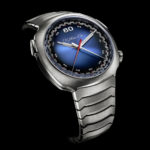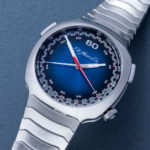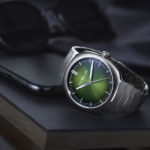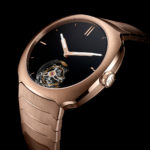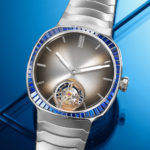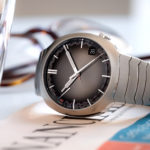Up Close: H. Moser & Cie. Streamliner Flyback Chronograph
Sleek and properly integrated.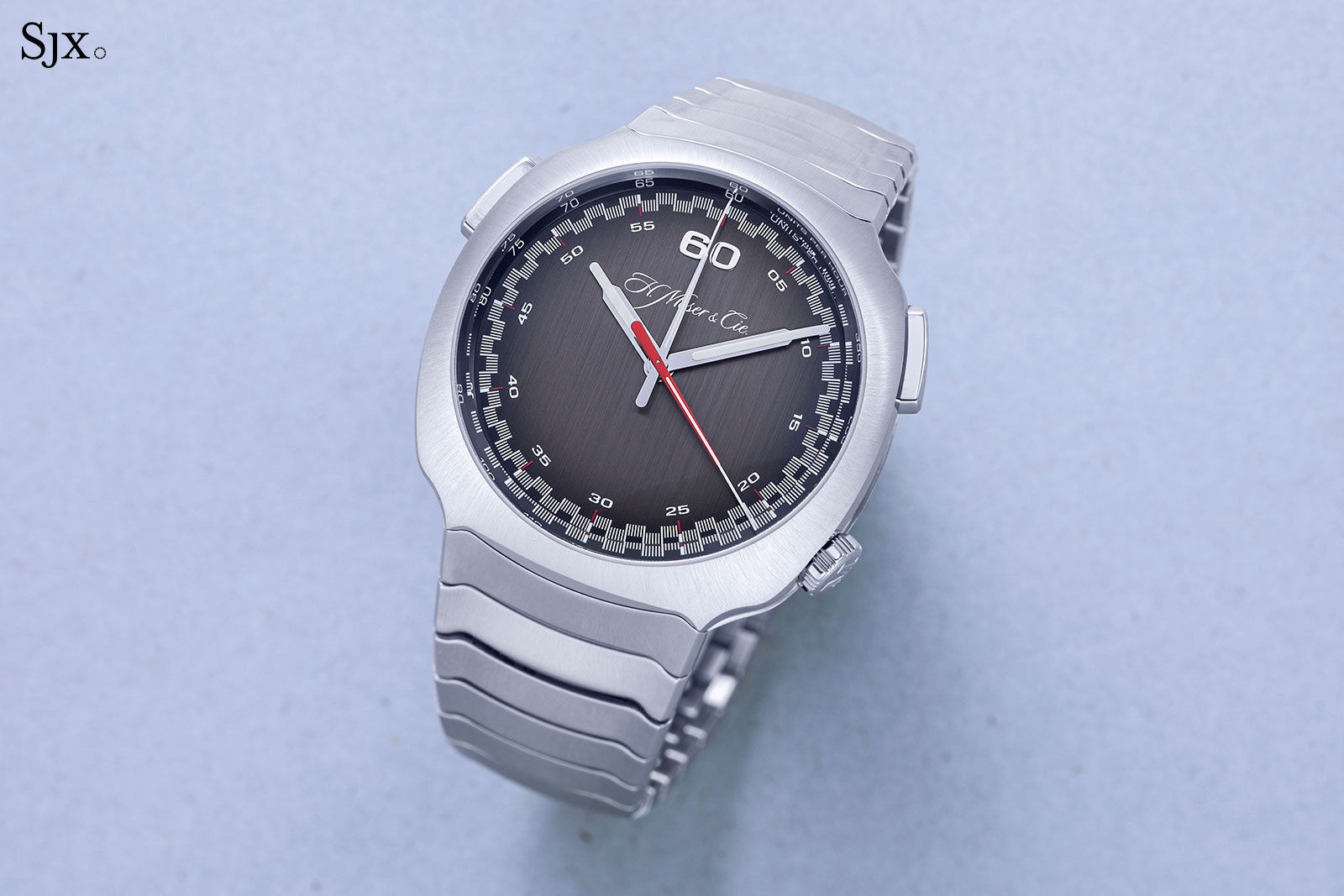
Luxury sports watches are a fad that numerous watchmakers are trying their hands at – with varying degrees of success. H. Moser & Cie. is the latest brand to try its hand at a sports watch. While the fact is not a surprise, since the company has been dropping hints about it for over a year, the product is unexpectedly well executed and different.
Limited to 100 pieces but with future variants in the works, the Streamliner Flyback Chronograph is a “bull’s head” chronograph with the buttons at two and ten o’clock and a “racing” style dial. The Streamliner is characterised by an unusual cushion-shaped case and integrated bracelet, creating a design that brings to mind watches of the 1970s and 1980s, but still manages to be novel in the crowded luxury sports watch segment.
Importantly, Moser also got the functional aspects of the watch right: the case is water-resistant to 120m, and the chronograph pushers can be operated underwater to the same depth.
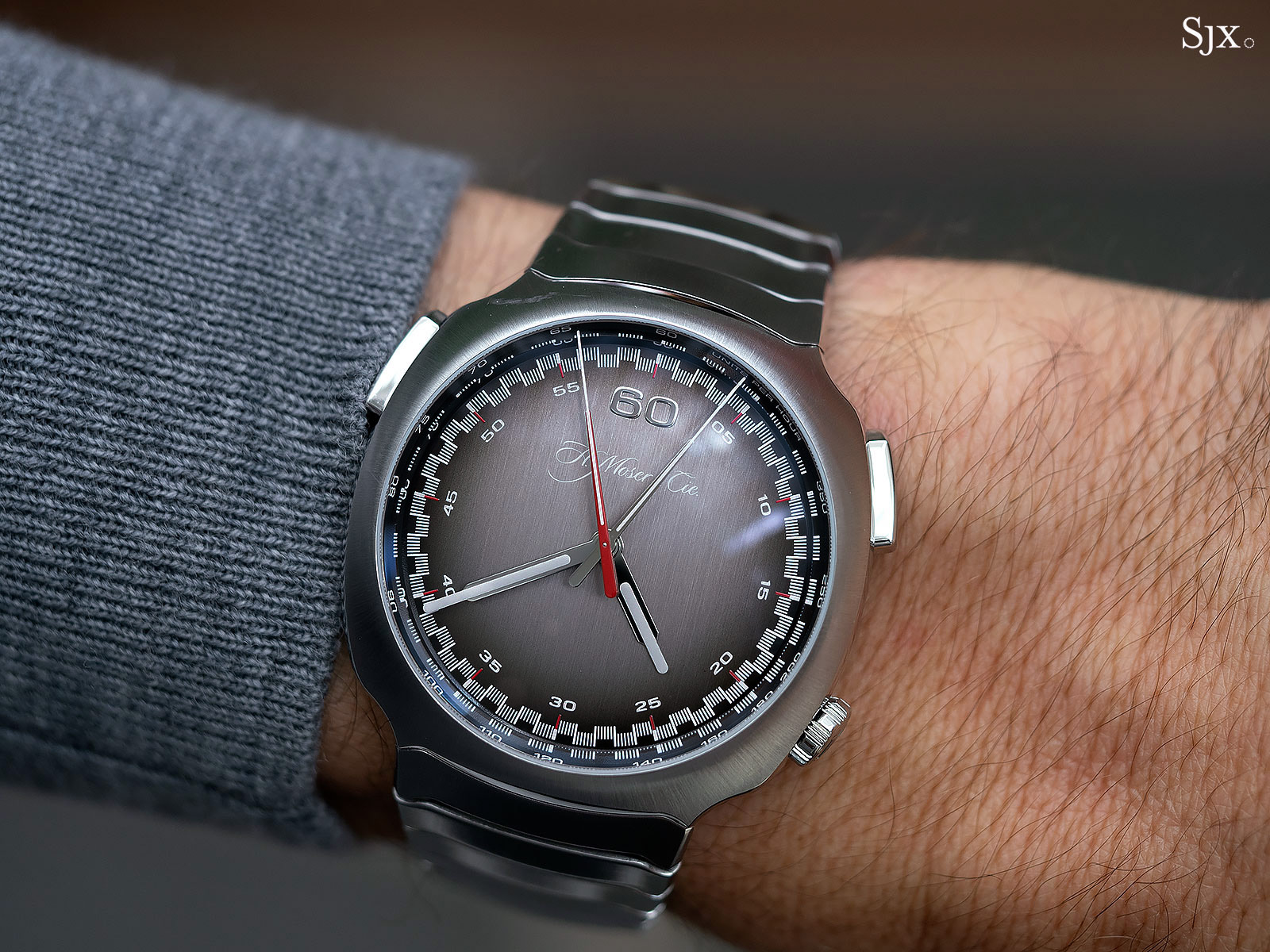
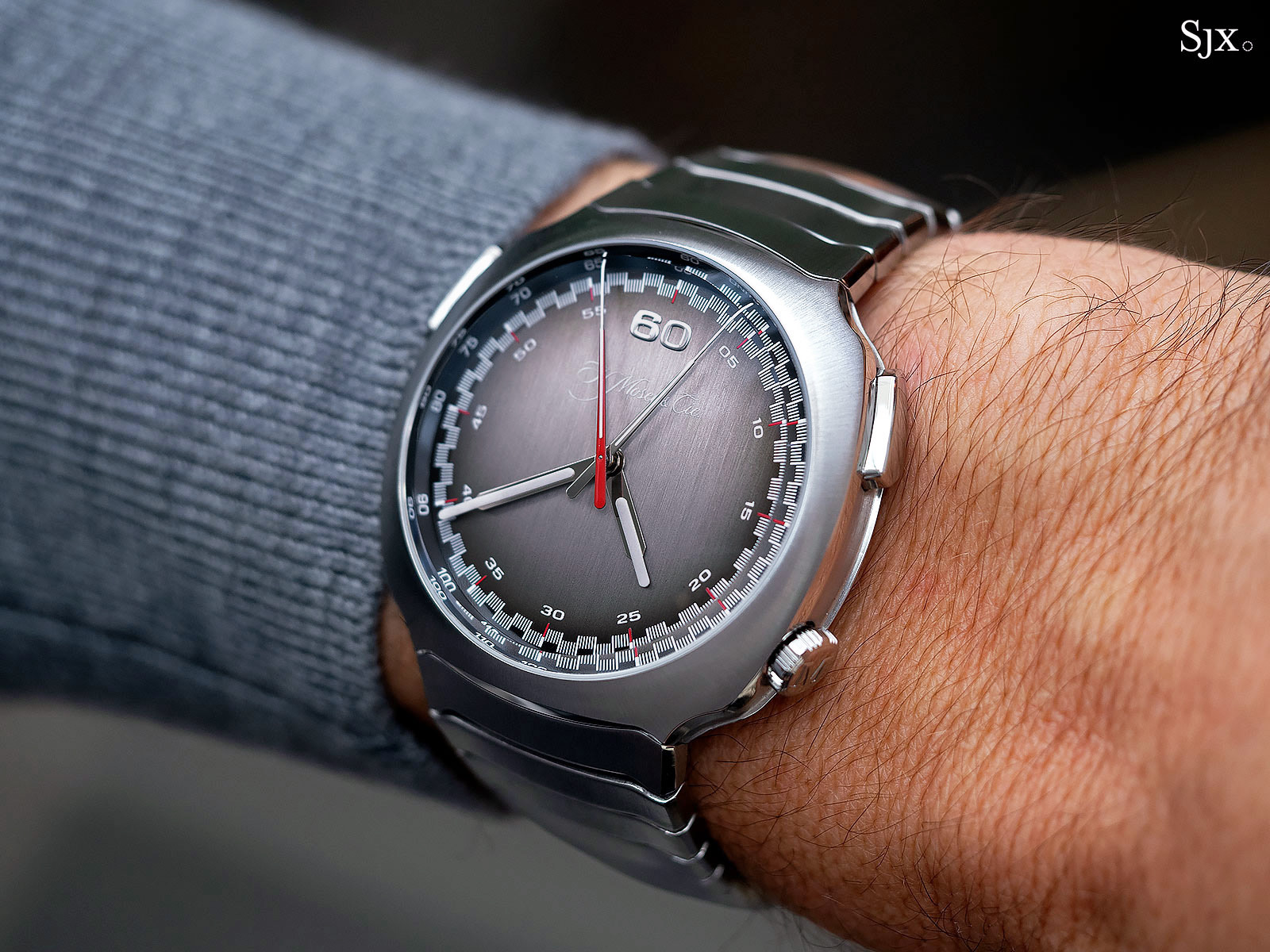
The Streamliner on the wrist of Moser CEO Edouard Meylan
Fond memories
Designed by Marcus Eilinger, a freelance designer whose recent work includes watches for IWC, Montblanc and Huawei, the Streamliner brings to mind interesting, maybe even great, watches of the past that are now forgotten, so it looks fresh.
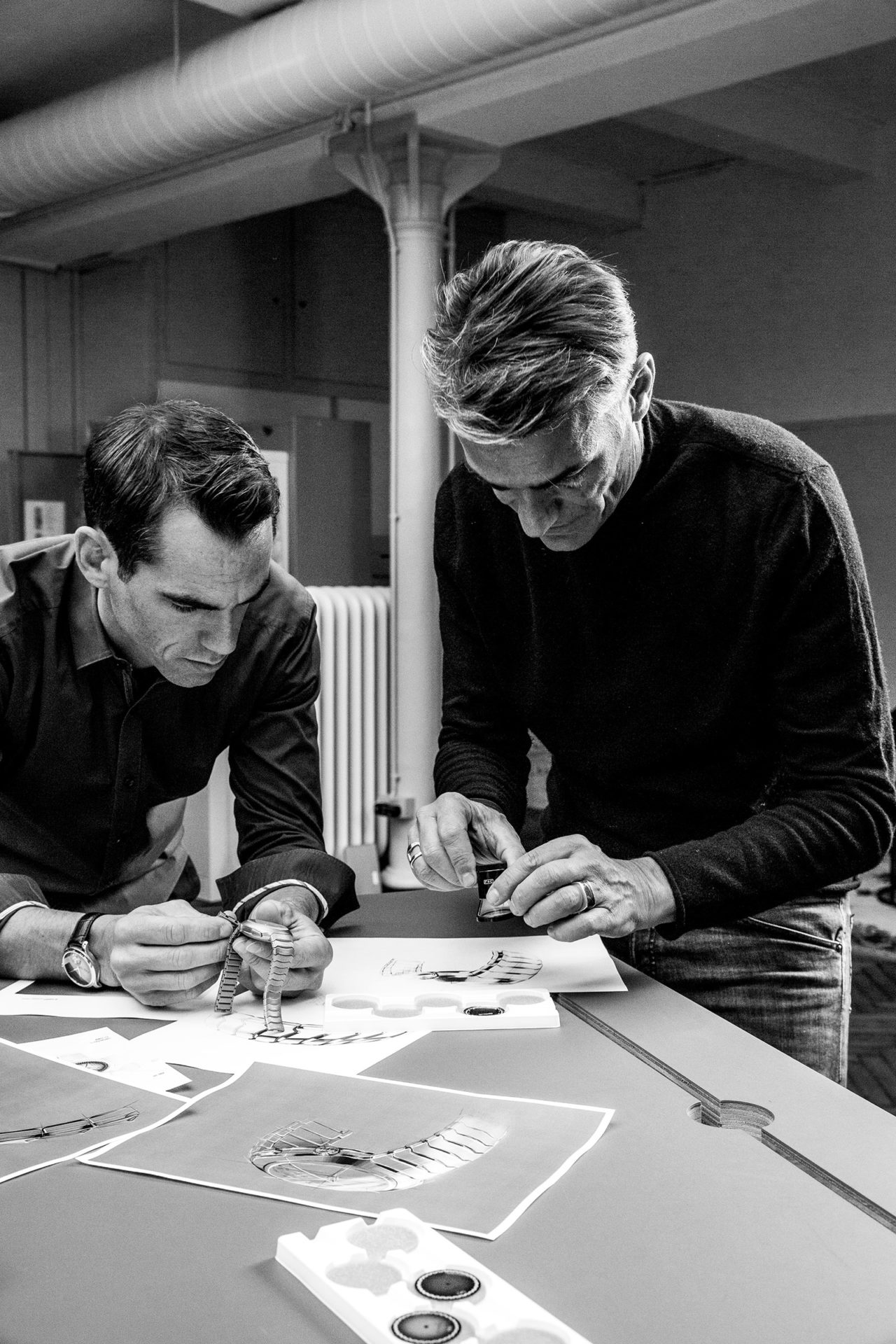
Edouard Meylan (left) with designer Marcus Eilinger. Photo – H. Moser & Cie.
While Streamliner’s case is reminiscent of chunky 1970s chronographs made by the likes of Omega, Heuer, and Longines, the integrated bracelet brings to mind the Ebel Sport Classic, introduced in 1977 and a massive hit in the 1980s.
The Sport Classic was most famous for being worn by Don Johnson in television series Miami Vice, and helped propel Ebel into the top league of watchmakers measured by sales. But that has short-lived; Ebel then changed hands several times and has since faded into obscurity, while the Sport Classic has been forgotten.
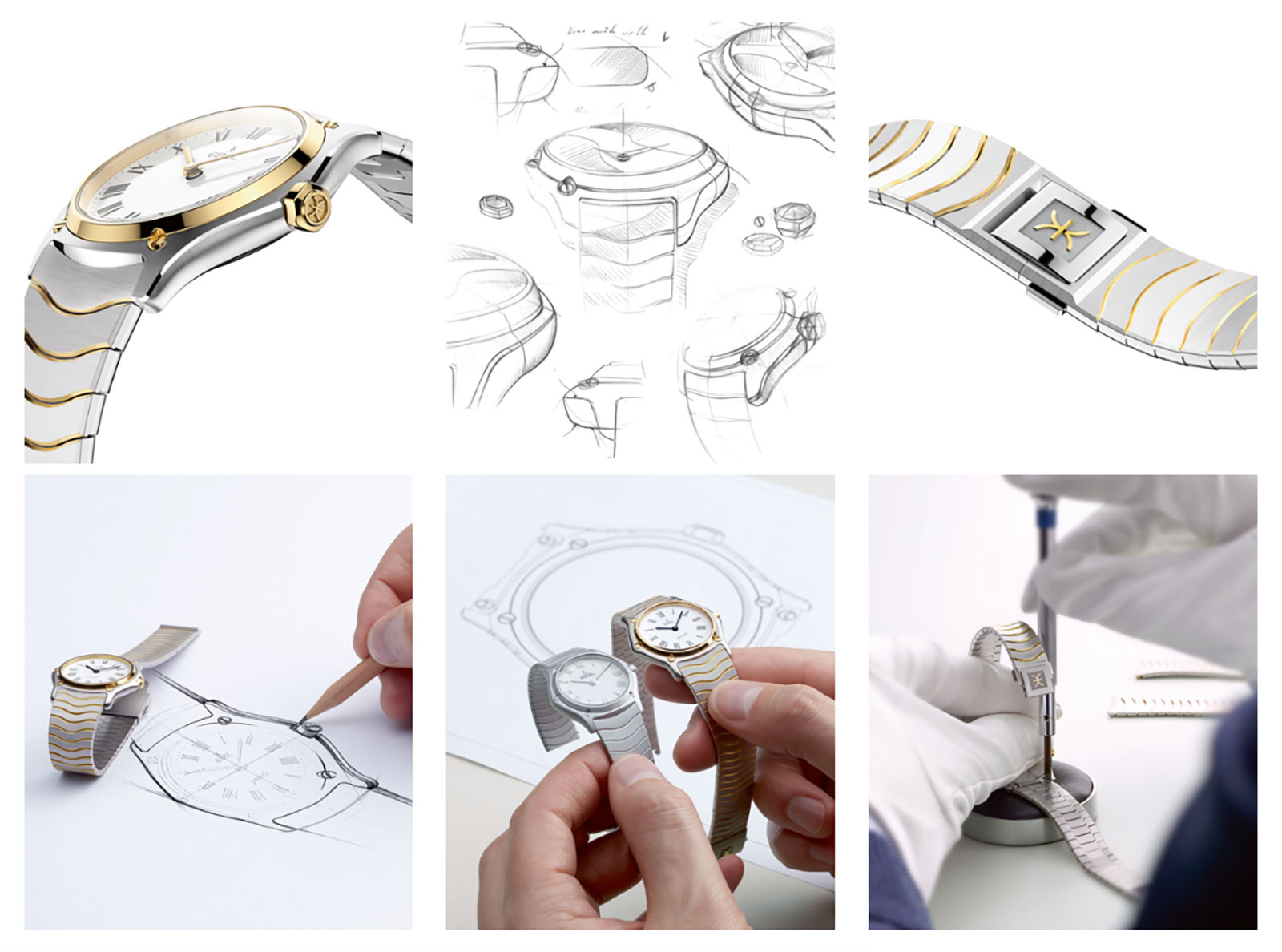
The Ebel Sport Classic. Photos – Ebel
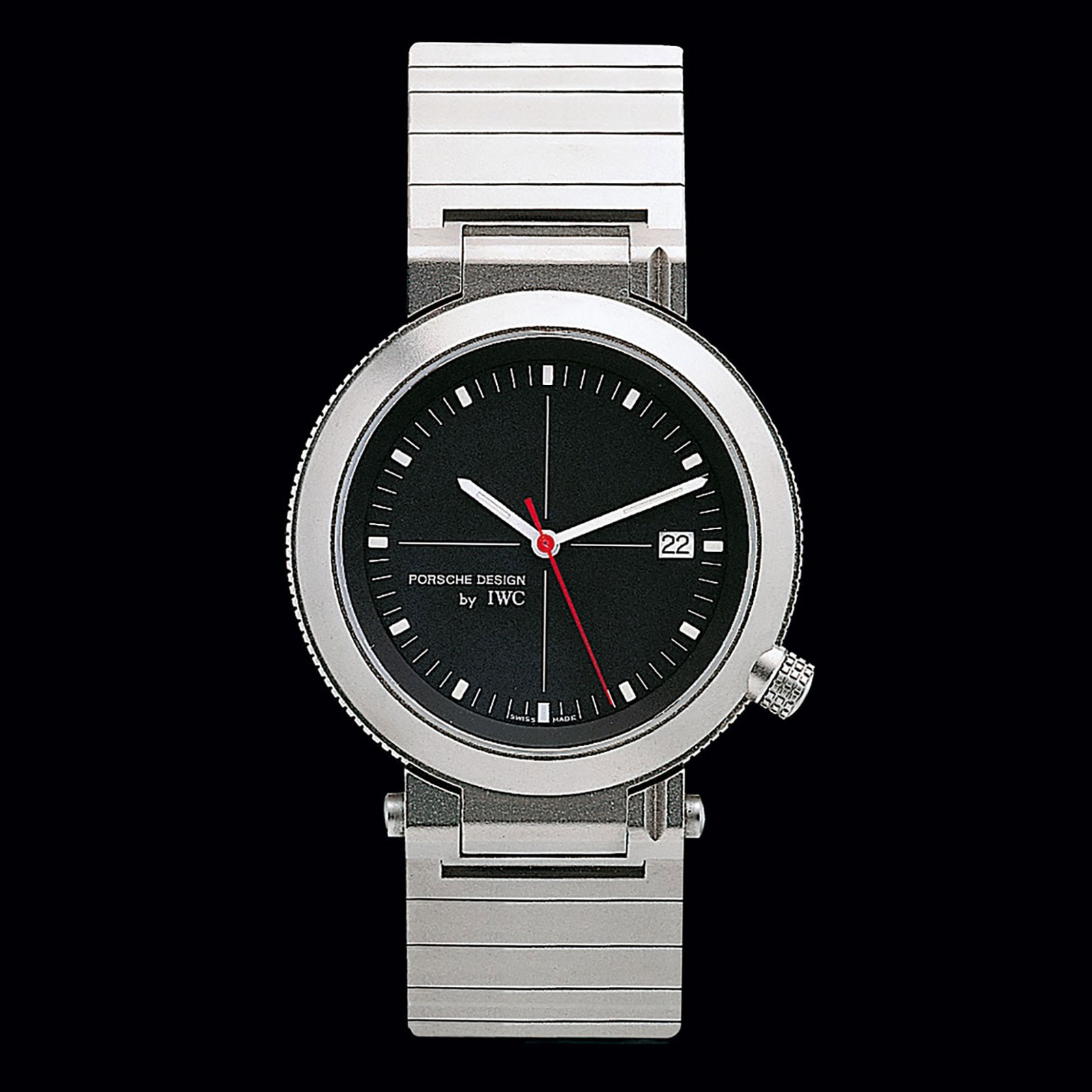
The IWC Porsche Design Compass Watch ref. 3511. Photo – IWC
And when he was showing me the watch, Moser chief executive Edouard Meylan pointed out the Streamliner reminds him of the brilliant but now under-appreciated IWC Porsche Design watches of the 1980s, most of which had sleekly integrated titanium bracelets.
In short, the Streamliner has evident historical inspiration, but of the right sort.
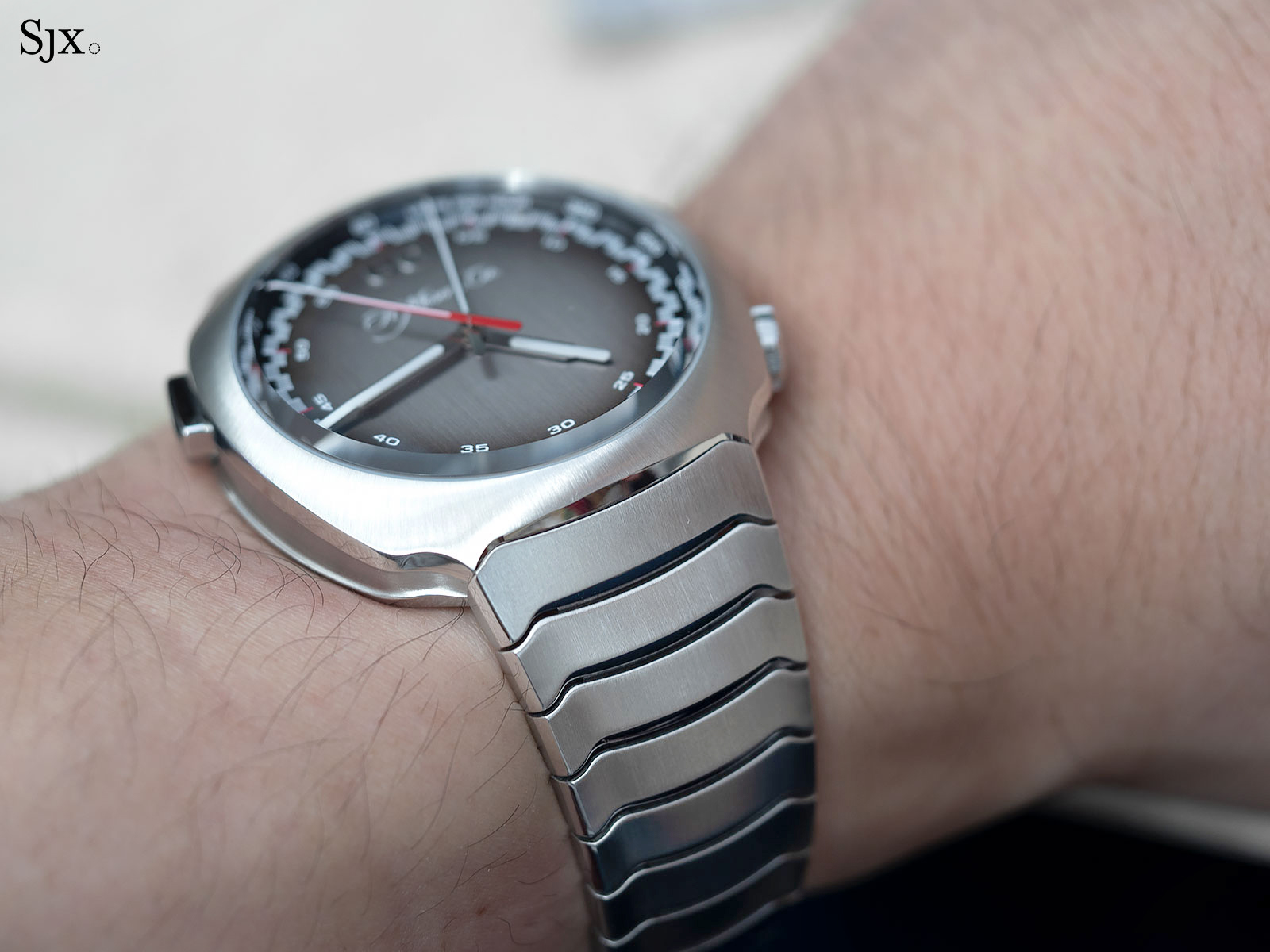
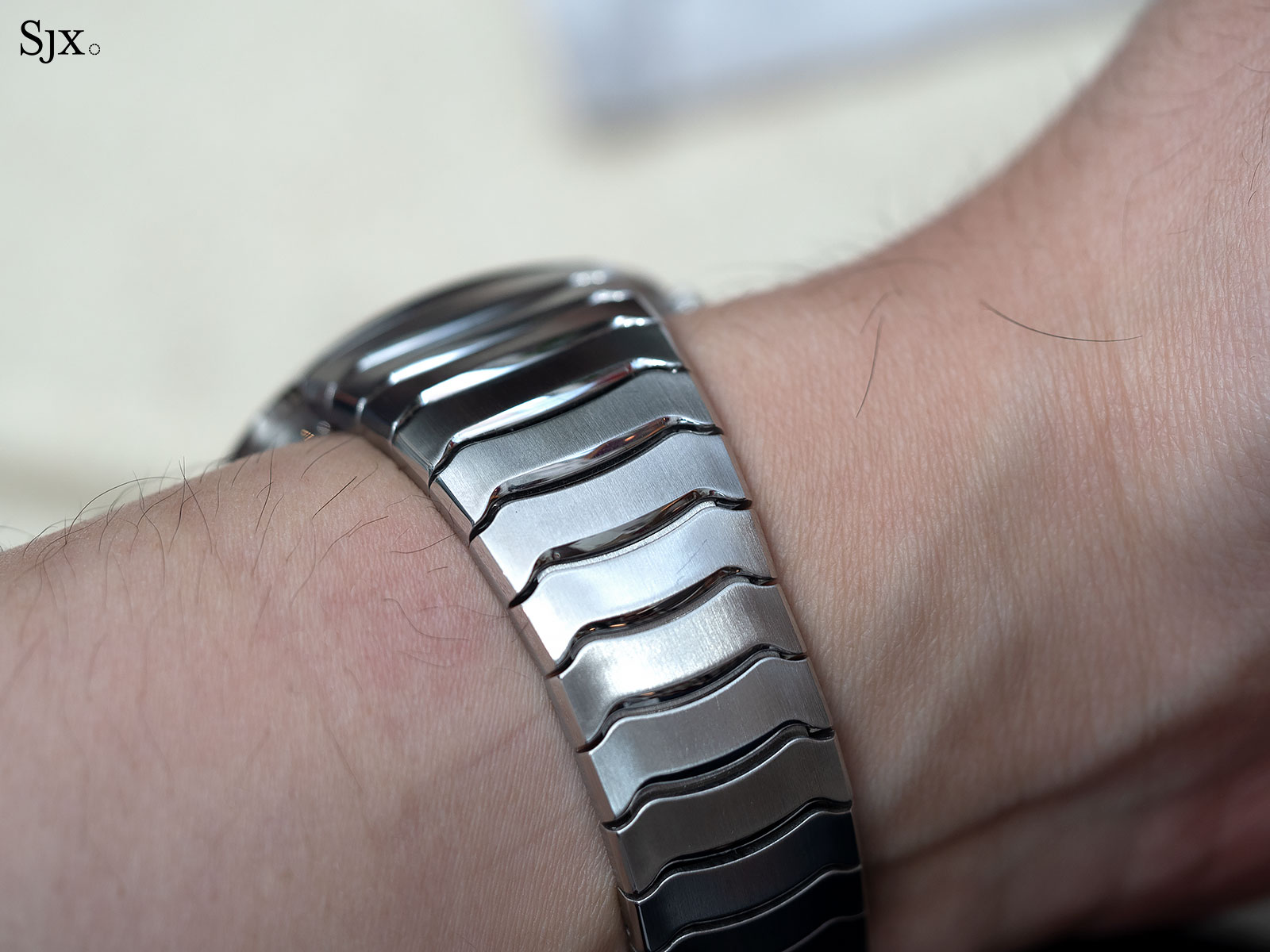
All steel
The case is thoughtfully detailed in style and finish. Squarish in shape and measuring 42.3mm by 14.2mm, the case is large but not too large, though it is slightly thick, in part because it is a chronograph. Overall, the size is right for a sports chronograph.
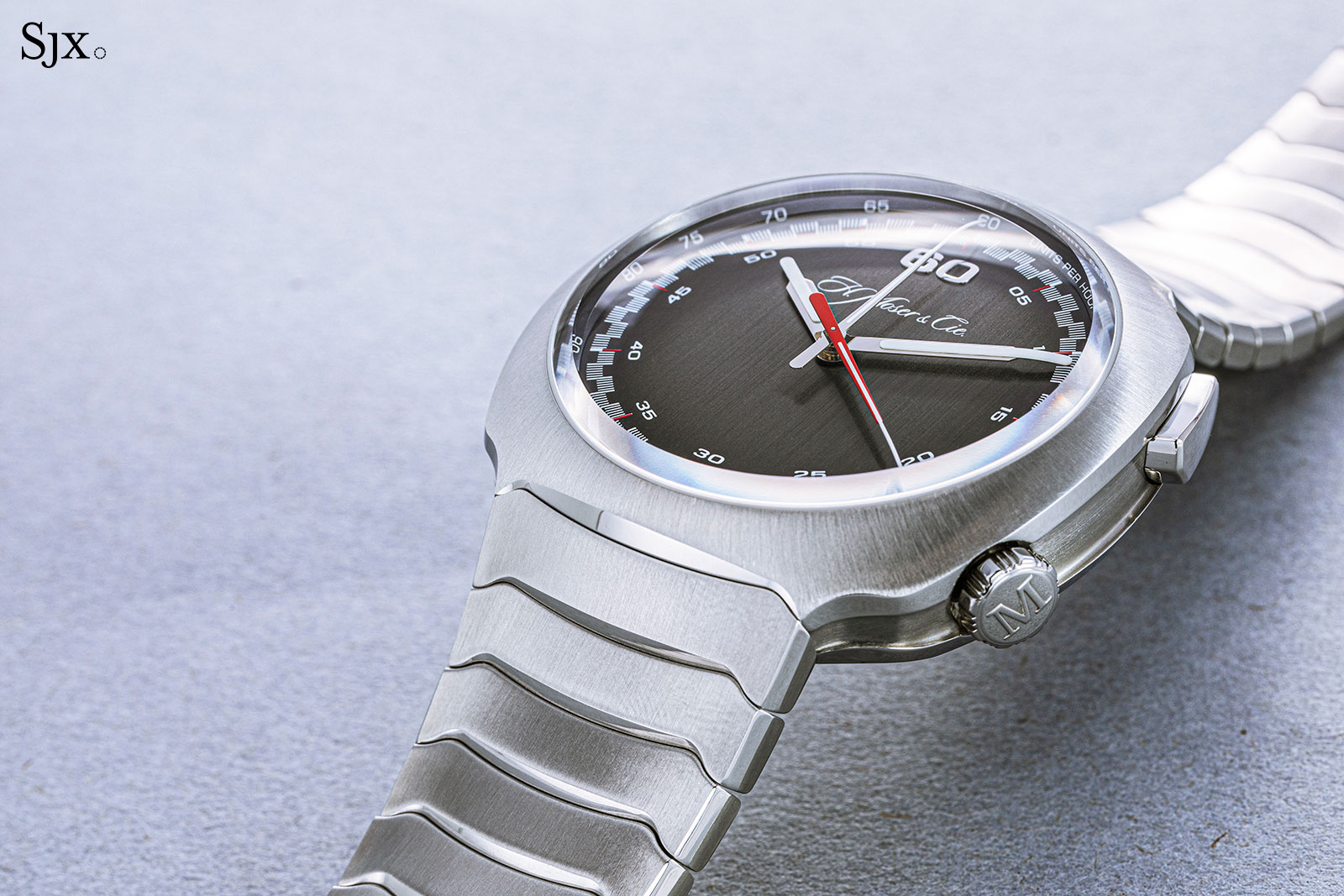
Like the 1970s cases that inspired this, the Streamliner case has a radially brushed top surface, while its edges are bevelled and polished.
Interestingly, the case sides are framed on the top and bottom edges with a raised lip, which creates the impression that the case has a sandwich construction. But it is actually one piece; the top and bottom lips are not of a separate bezel.
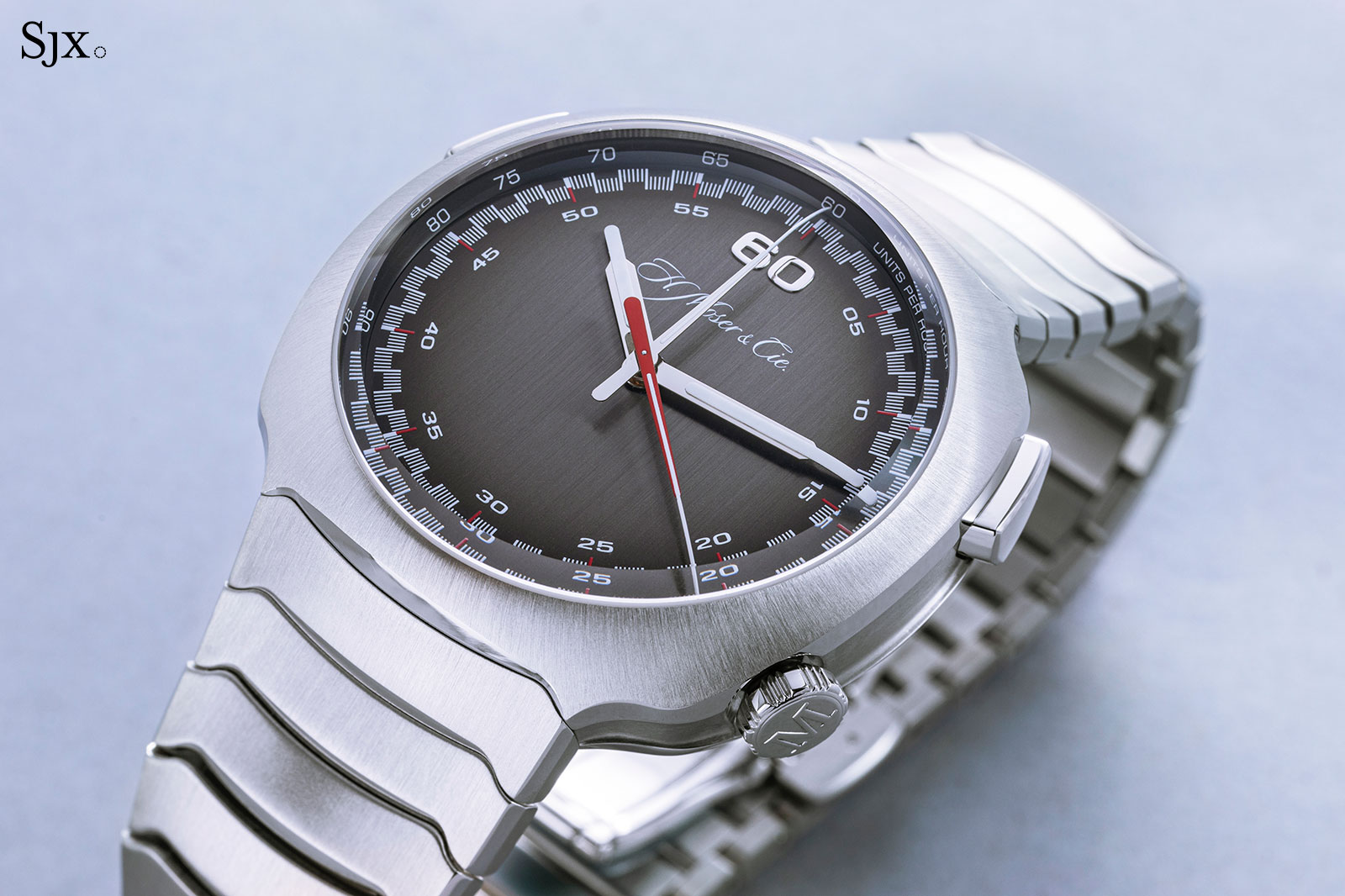
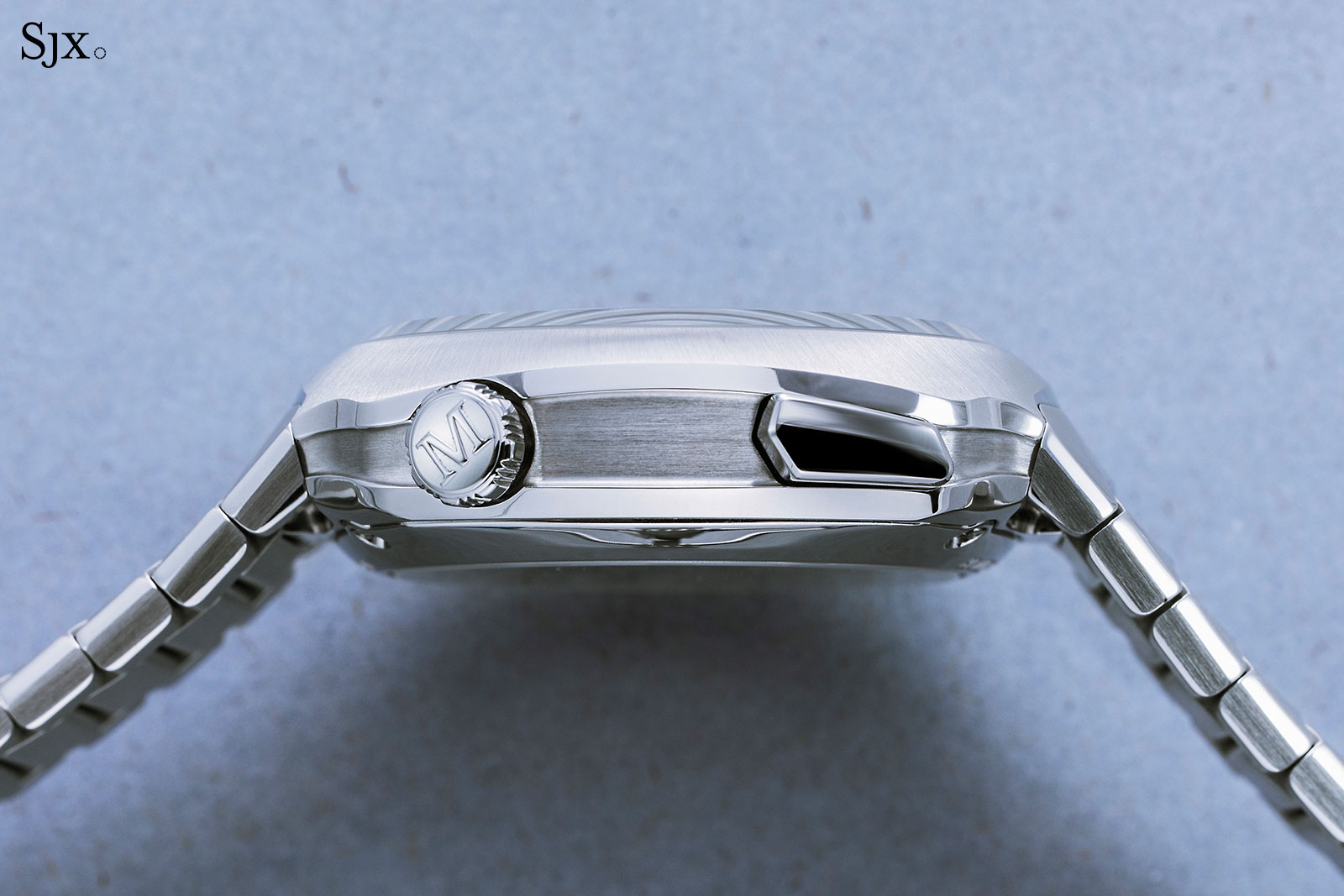
The chronograph buttons echo the shape and style of the case, integrating well into the overall design
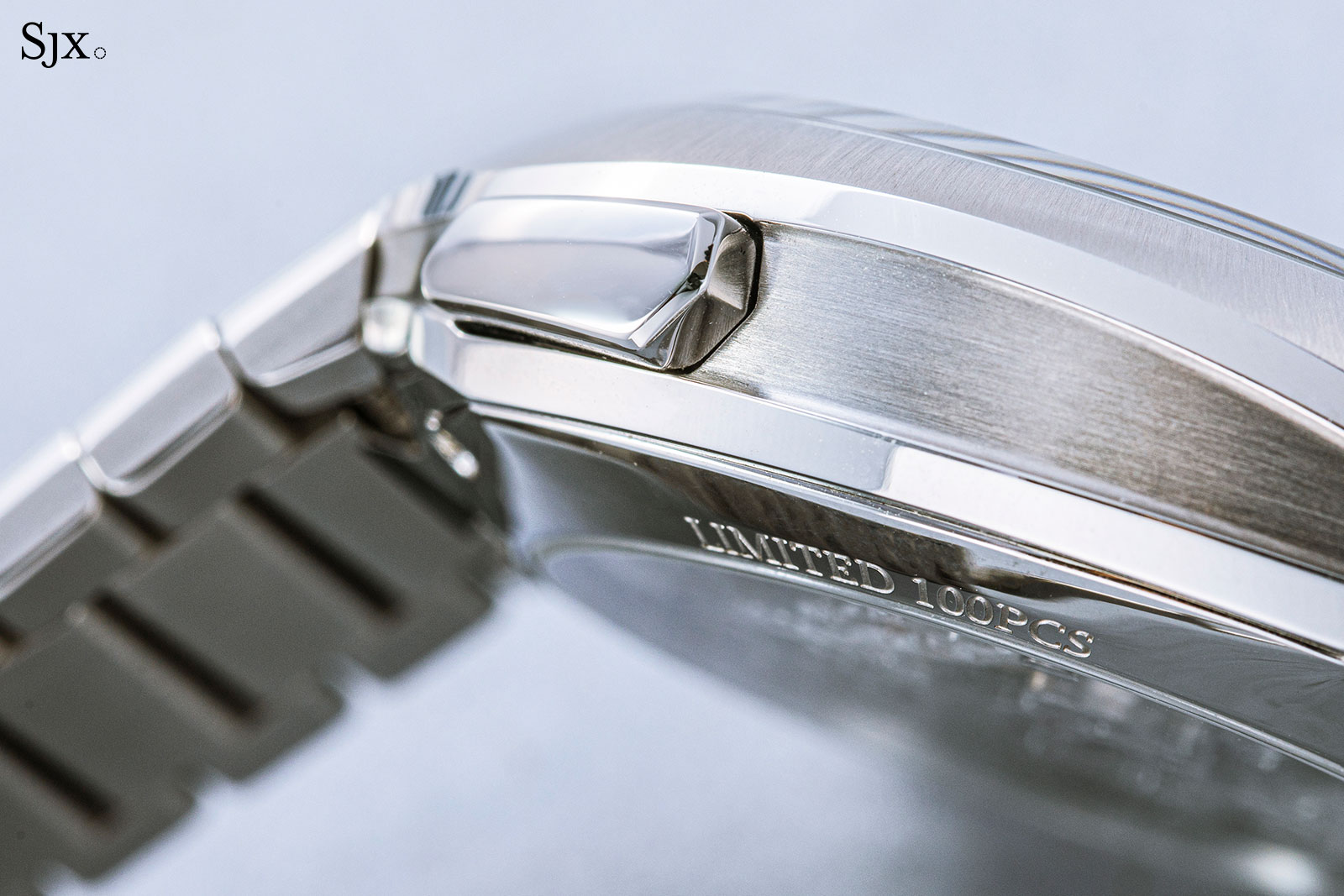
The bracelet design is particularly well done; it flows into the case seamlessly and is actually an integrated bracelet. Also, the clasp is hidden, giving the bracelet a seamless appearance all the way around.
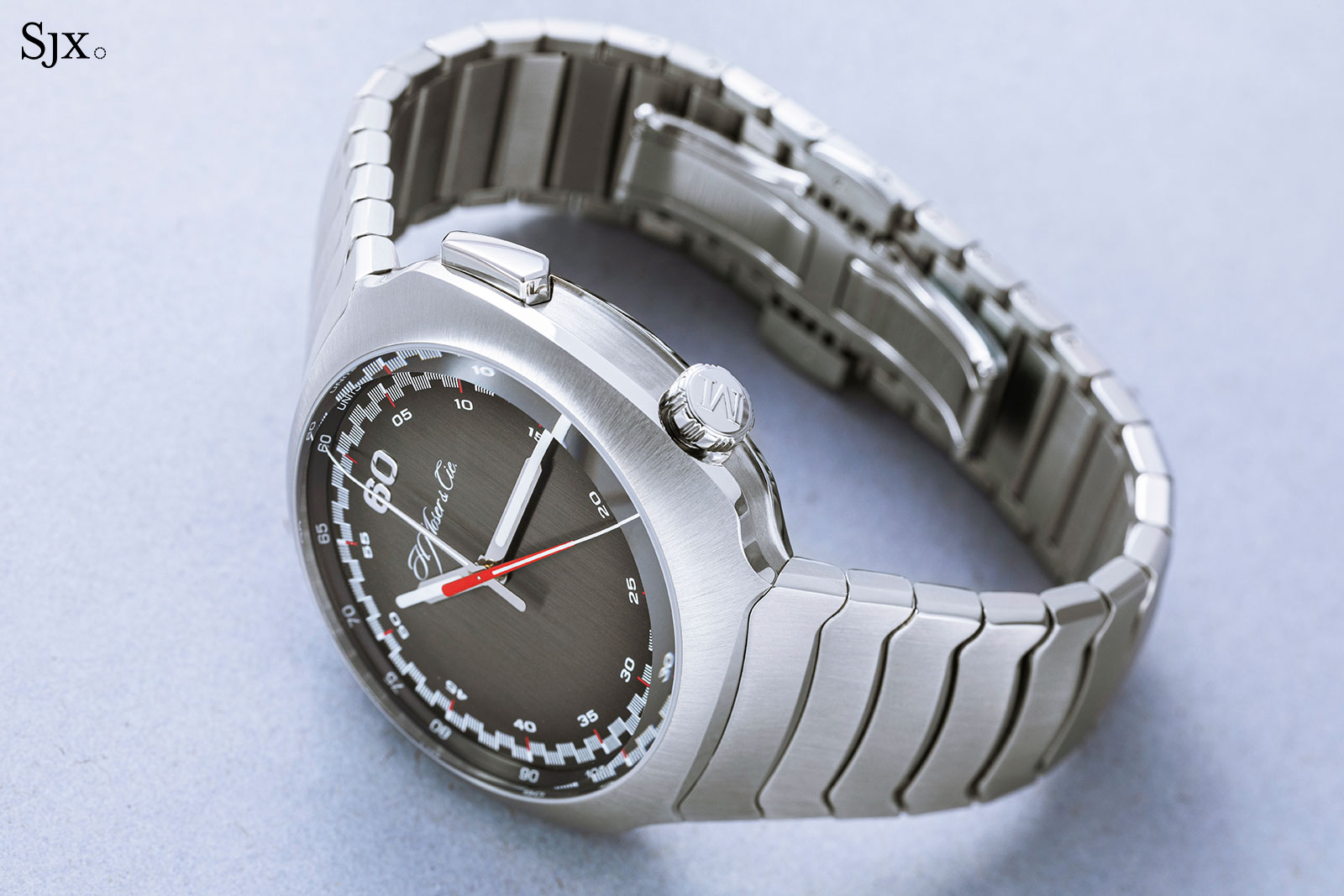
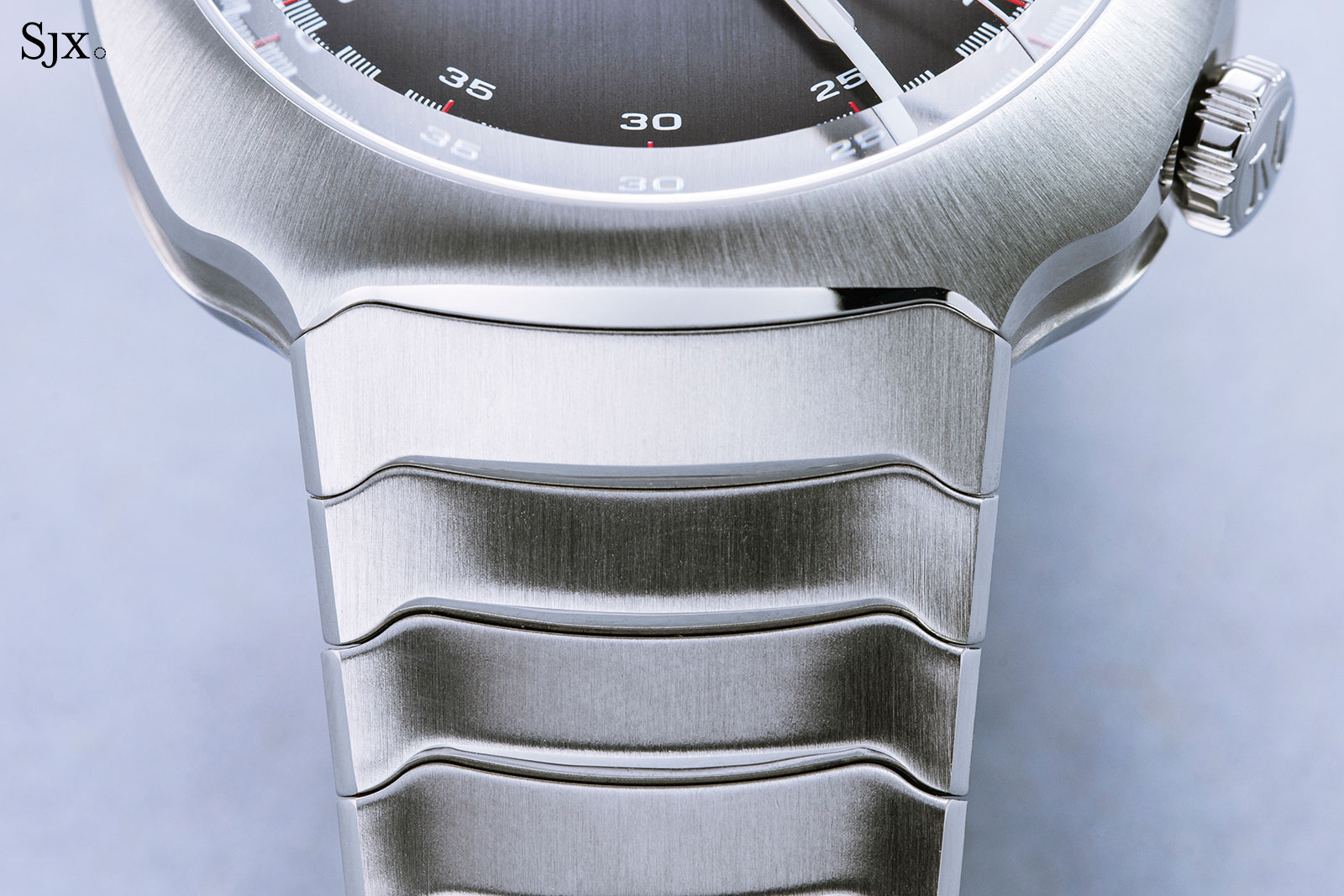
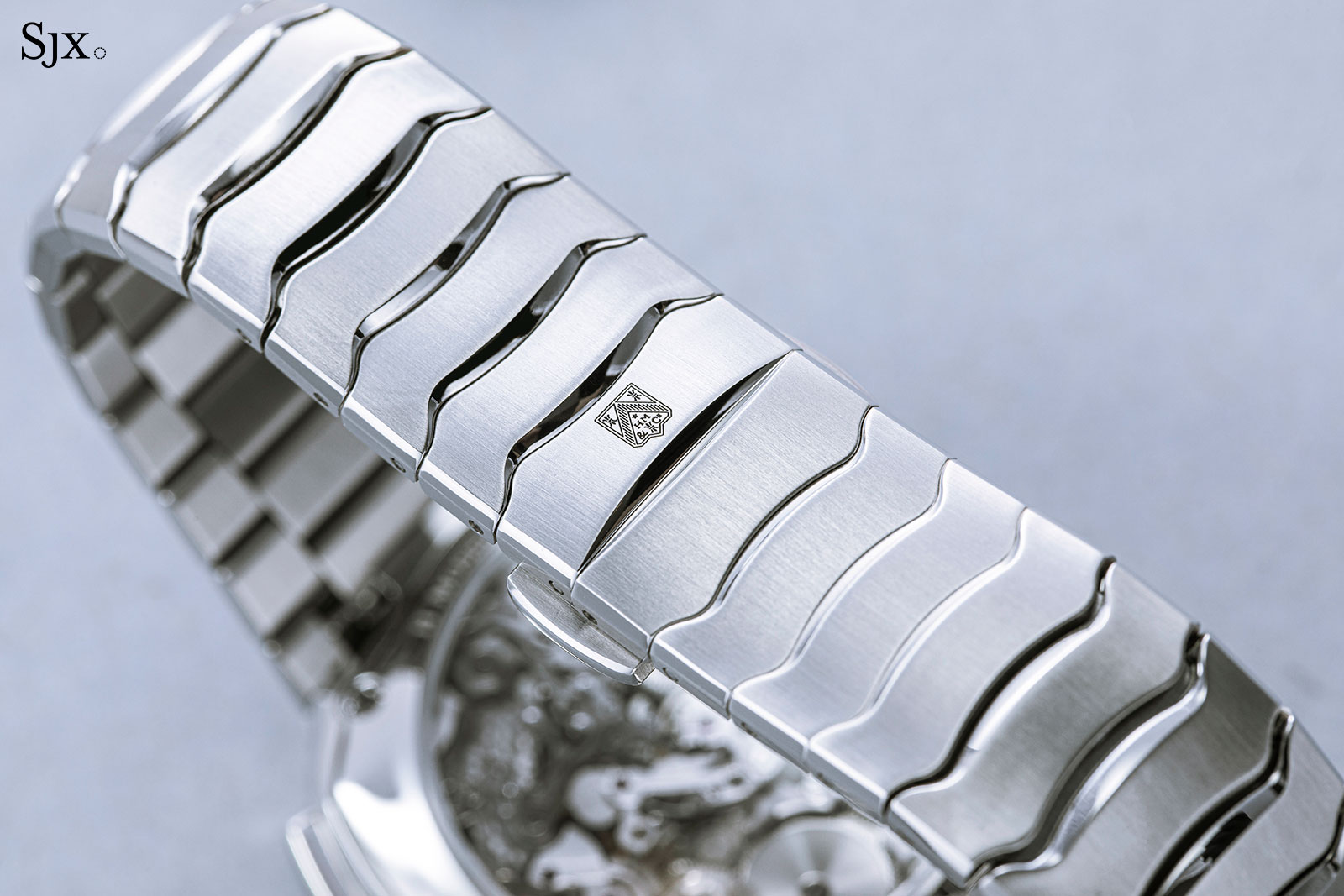
The clasp is a push-button affair, which is entirely functional, but quite ordinary
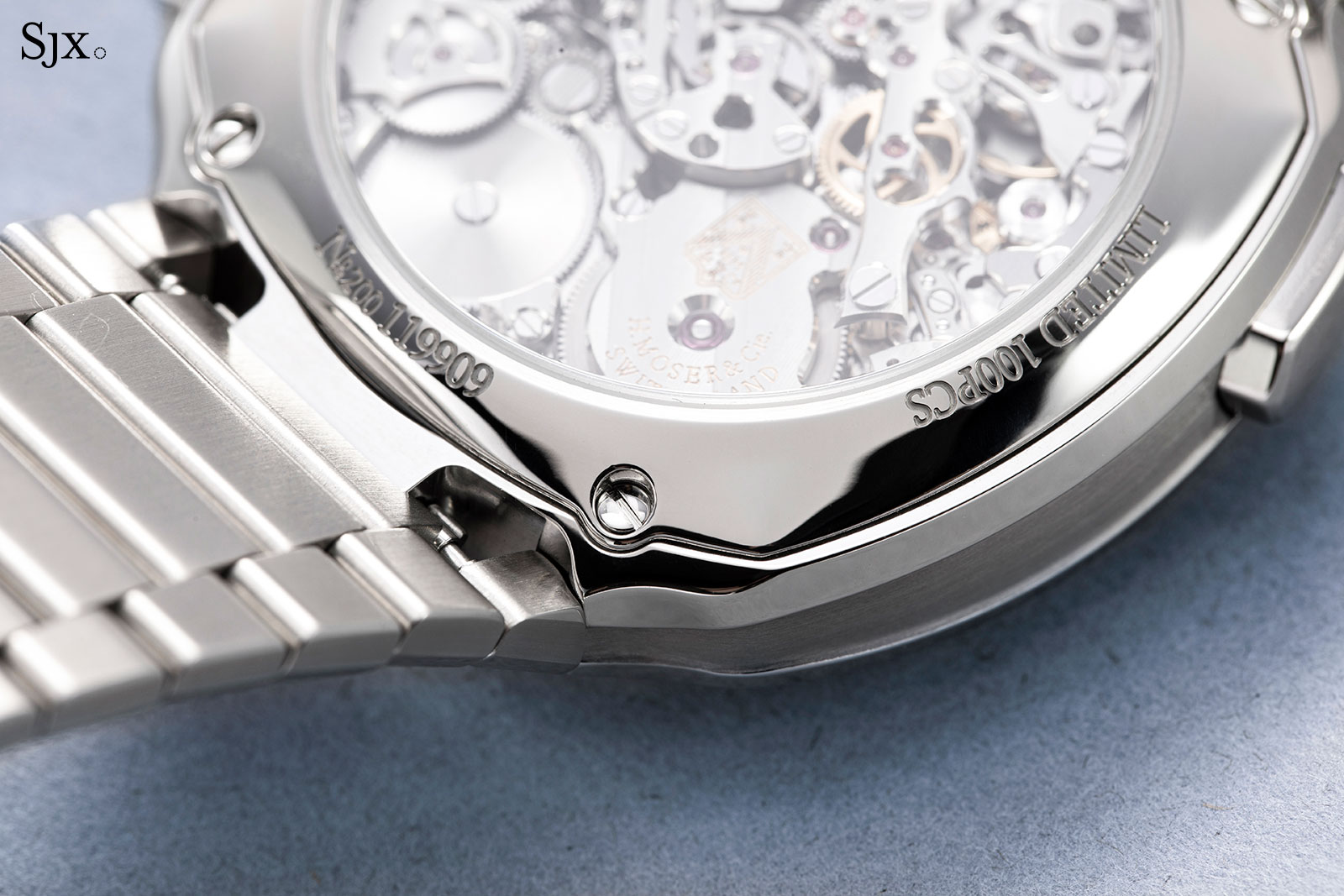
And because the bracelet has rather large links, the watch sits upright, forming a ring, when placed on a table with the clasp at the bottom – a welcome bonus that gives the watch a little bit more sportiness.
But the downside of such large links is the inability to adjust the clasp in small increments, since the minimum adjustment is one link.
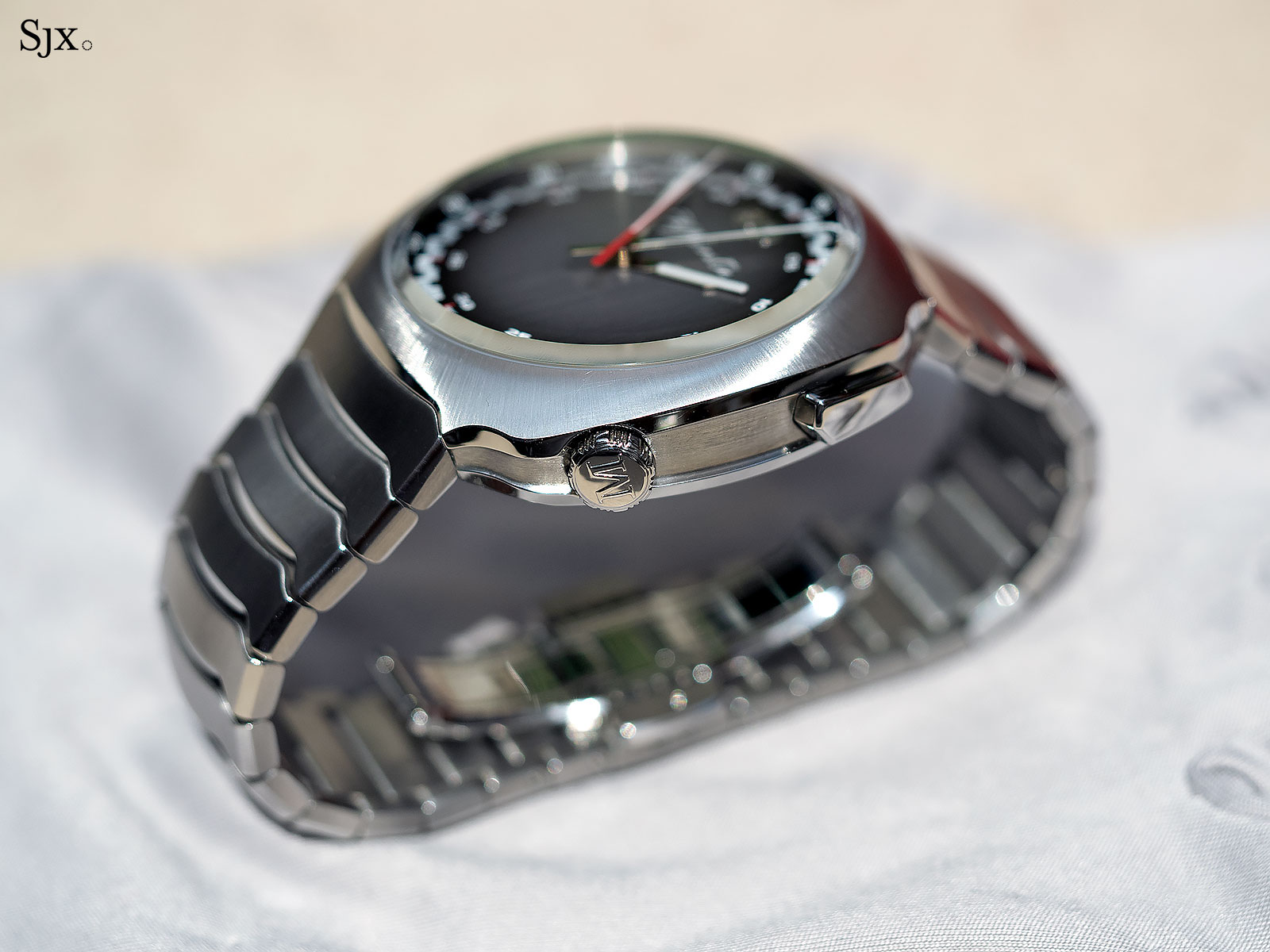
Like the case it is properly finished with a combination of brushed surfaces and polishes edges, giving it the appropriate shine and refinement required for an expensive sports watch. Importantly, the inner edges between each of the links are mirror polished, creating a contrast between the brushed top surface and giving the bracelet a more refined feel.
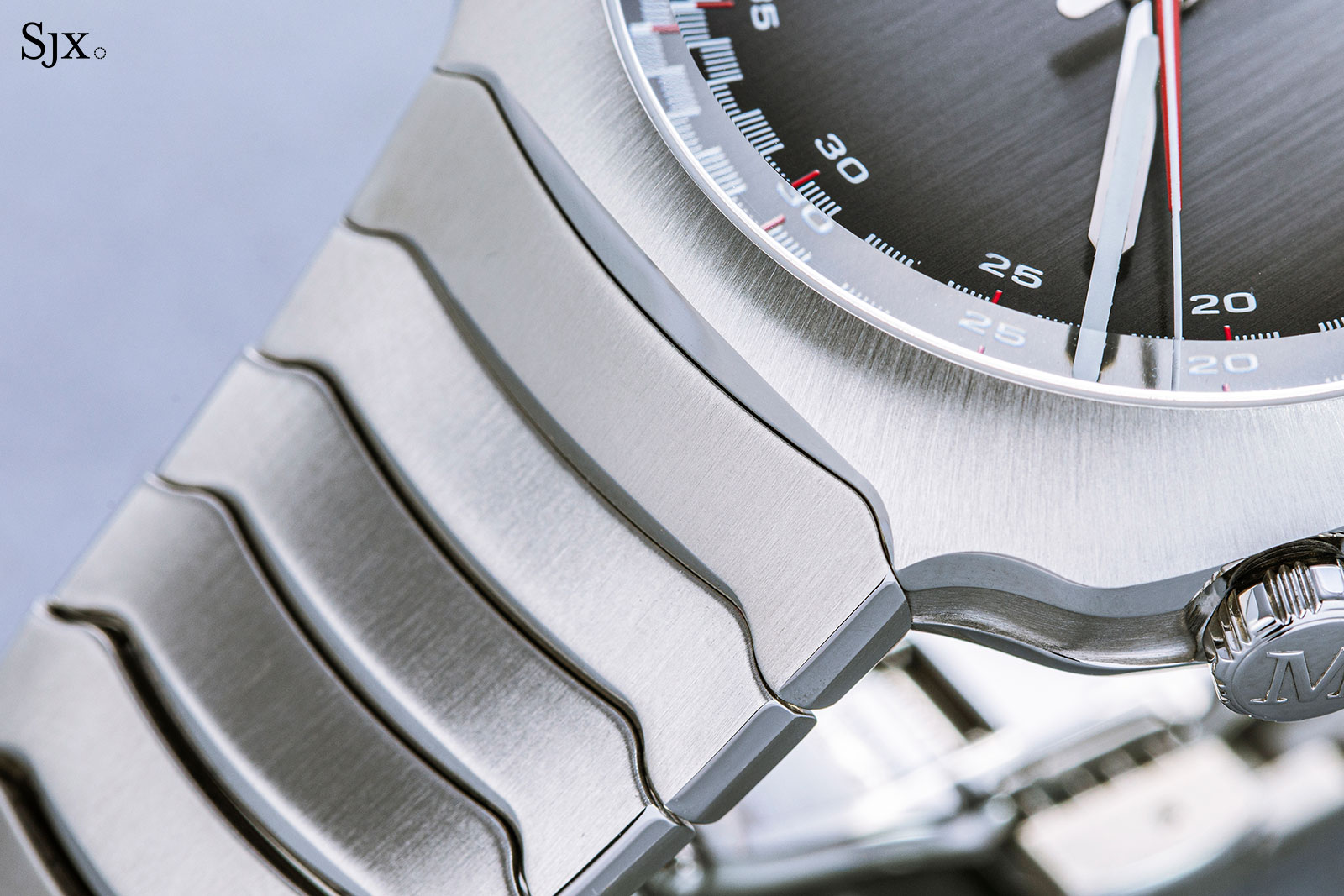
If there’s one thing I would change about the case and bracelet, it would be the material. Both are now in steel, which has the advantage of robustness and the ability to show off surface finishing, but it also means the watch is hefty. It’s not heavy, but it has obvious mass in the hand; in contrast, a sports watch usually feels more sporty when it is lightweight.
Fumè (again)
Like the case, the dial has a 1970s flavour. It’s a “racing” dial that has a chequerboard minute track on its outer edge.
And it is designed like a stopwatch, doing away with hour indices and retaining only minute markings with an extra-large “60”. That makes sense, since it is a central chronograph, and helps keep the dial clean and functional. That’s also helped by Moser having kept the lettering and markings on the dial to a minimum.
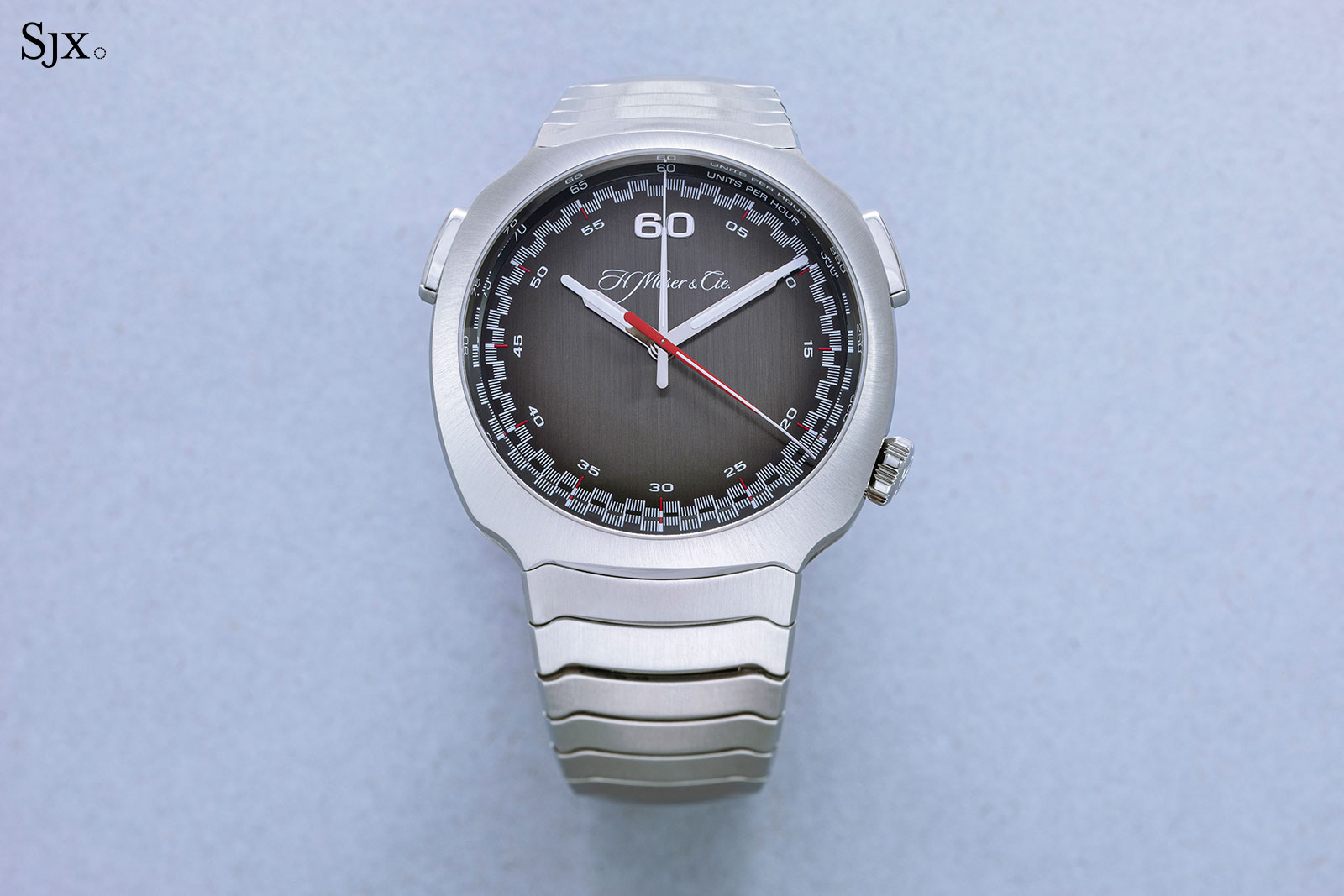
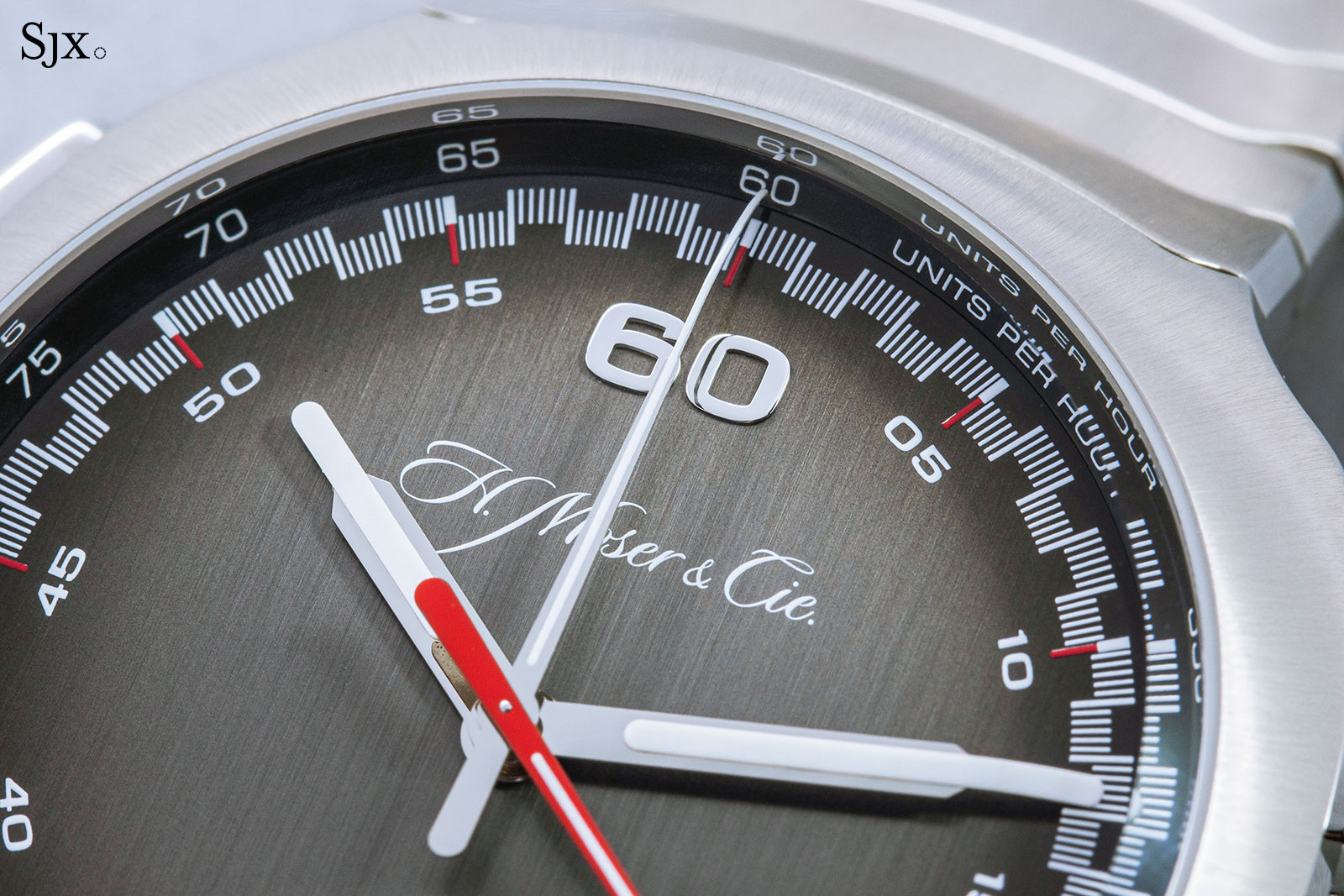
More unusual are the hands, which are a reinterpretation of the traditional syringe style. They are a new design and also a new construction, made up of two pieces: each hand is a brass body tipped with a white ceramic insert, infused with Super-Luminova so it glows in the dark.
While the hands suit the styling of the case – and are highly legible – the rounded tips don’t quite fit the style of the case, at least for me.
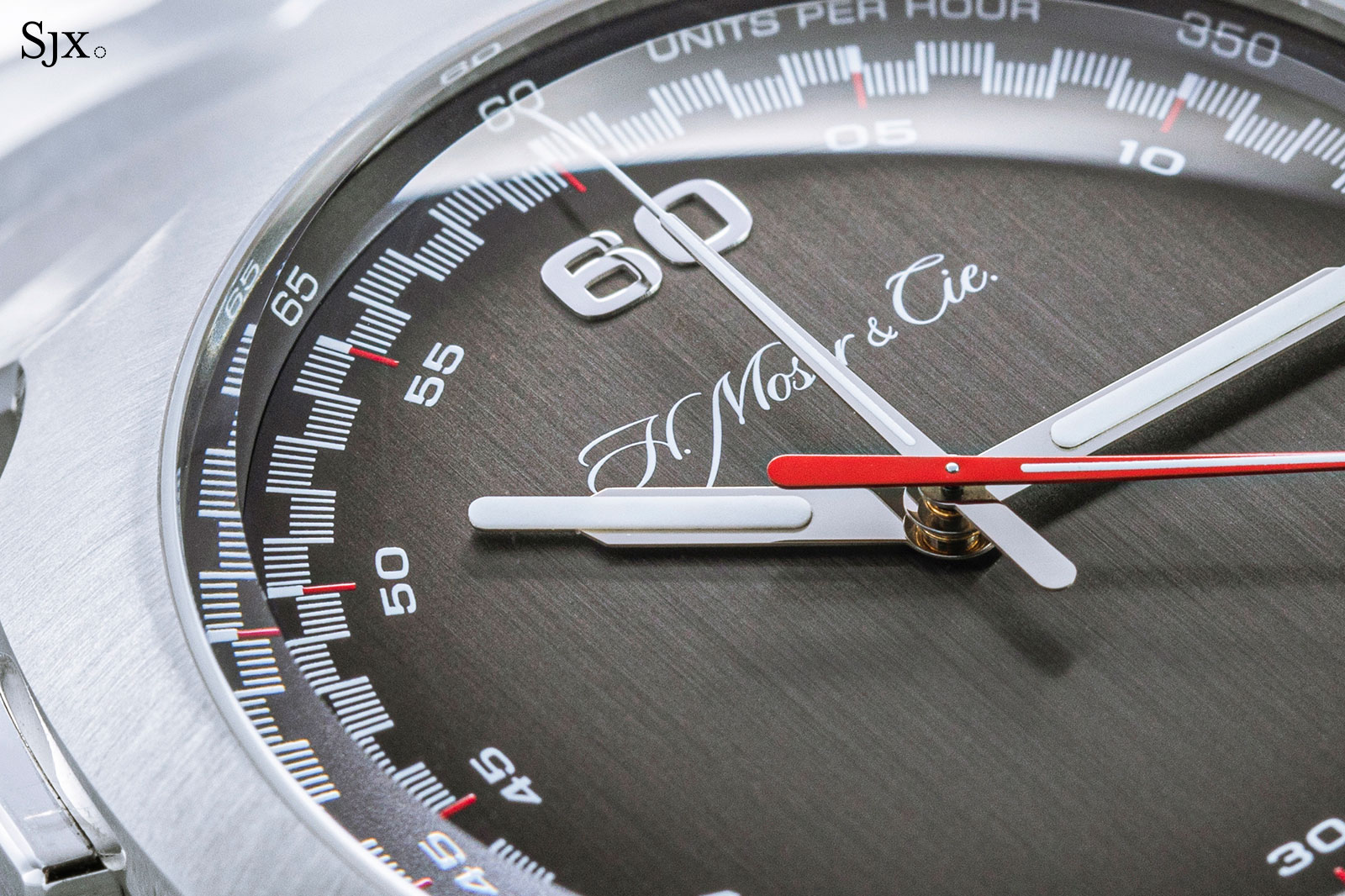
And of course, like most other Moser watches, the dial has a fumè finish that’s graduated from dark at the edges to light in the centre. But here it’s done with a slightly twist – the dial has a pronounced, vertical brushing that works wells with the styling.
Moser has produced so many fumè dials that the effect is no longer new, but the smoky finish is arguably most appropriate here, since graduated colours on dials were fairly popular in the 1970s.
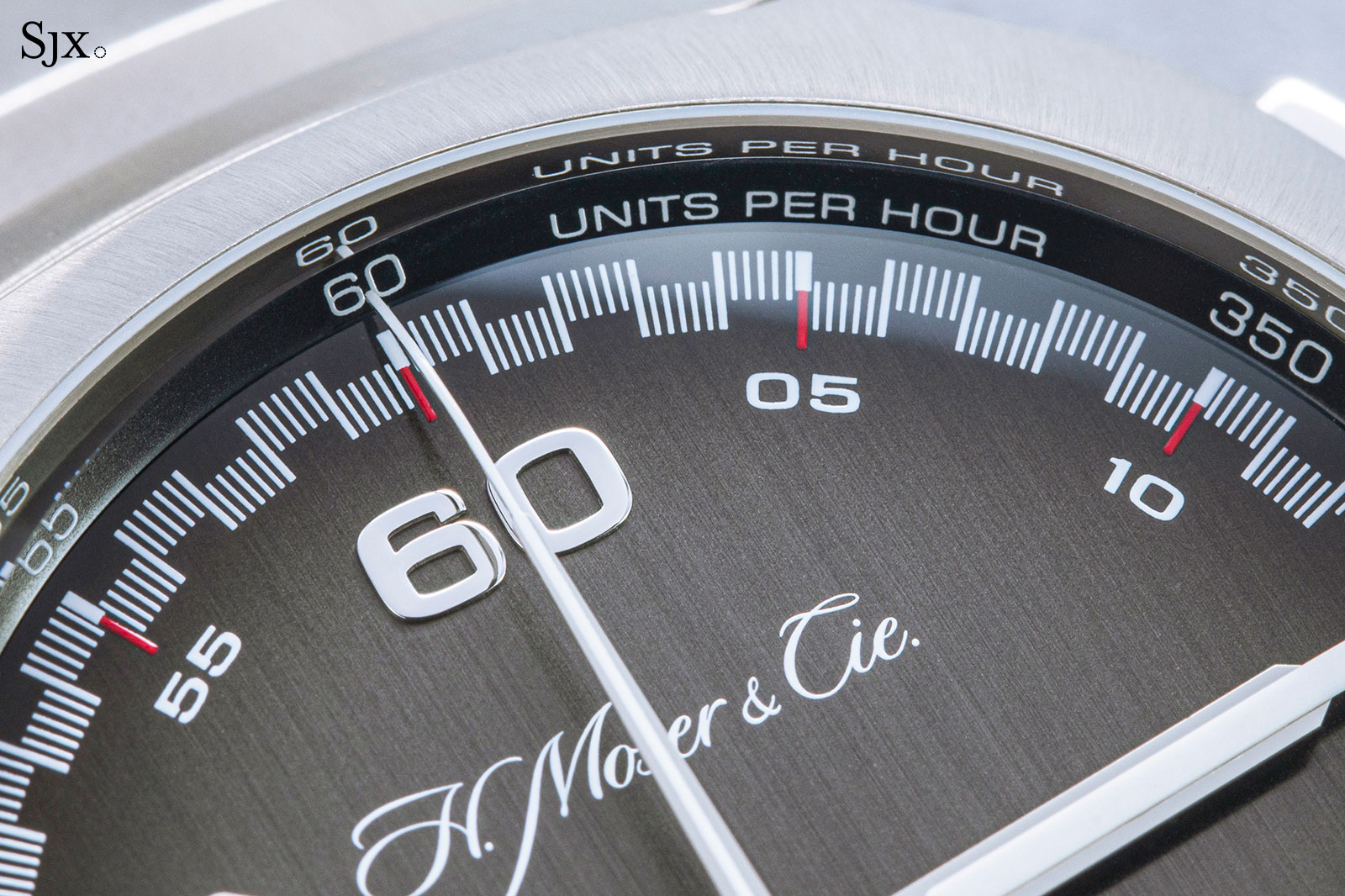
With a little help from one’s friends
Integral to how the watch looks – both the central chronograph counters and the “bull’s head” pushers – is the construction of the movement, the HMC 902. It’s a variant of the well-known AgenGraphe, produced by Geneva movement specialist Agenhor.
A family business led by Jean-Marc Wiederrecht, Agenhor supplies variants of the same calibre to Singer Reimagined, Faberge, and another brand that will launch later in the year.
Moser’s iteration of the movement features central elapsed seconds and minutes. Though it is functionally simple, the HMC 902 is made up of 434 parts, about double the number of a conventional chronograph, because of its inventive construction. Amongst other things, the movement is automatic, but the rotor is invisible, and lies hidden underneath the dial.
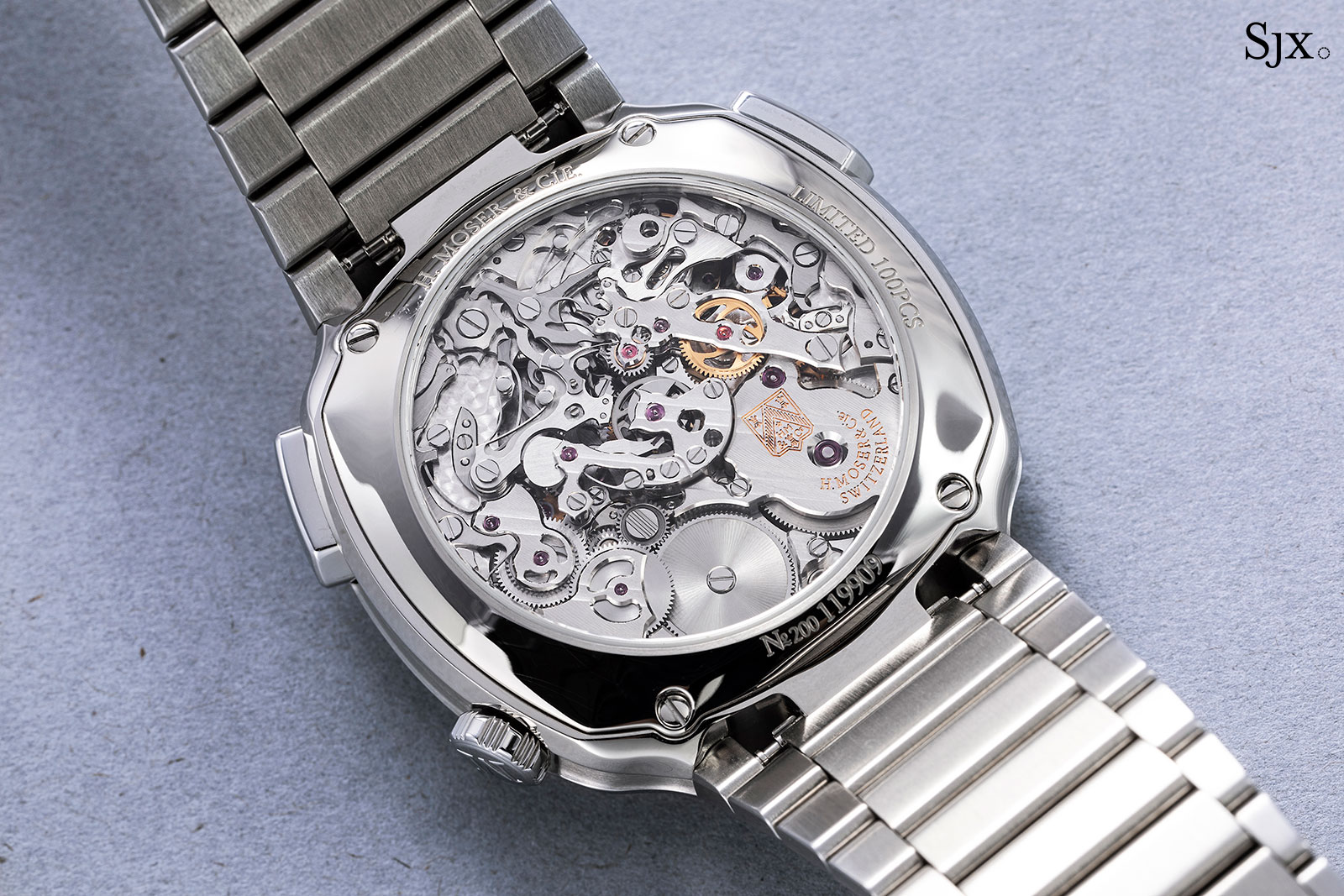
More fundamentally, the AgenGraphe reimagines many of the traditional aspects of the chronograph. An integrated chronograph movement but built like a donut, the AgenGraphe has the timekeeping train and regulator around the centre, which accommodates the chronograph mechanism.
The chronograph mechanism itself contains several innovations. Though it relies on a column wheel and horizontal clutch, just like most traditional chronographs, the clutch is novel. Designed for precise and instantaneous engagement of the chronograph, the AgenClutch wheels are smooth-edged and coated in diamond-nickel composite, driving each other via contact friction, instead of meshing teeth. But both clutch wheels also incorporate conventional toothed “security” gears just below, in order to keep the wheels in alignment.
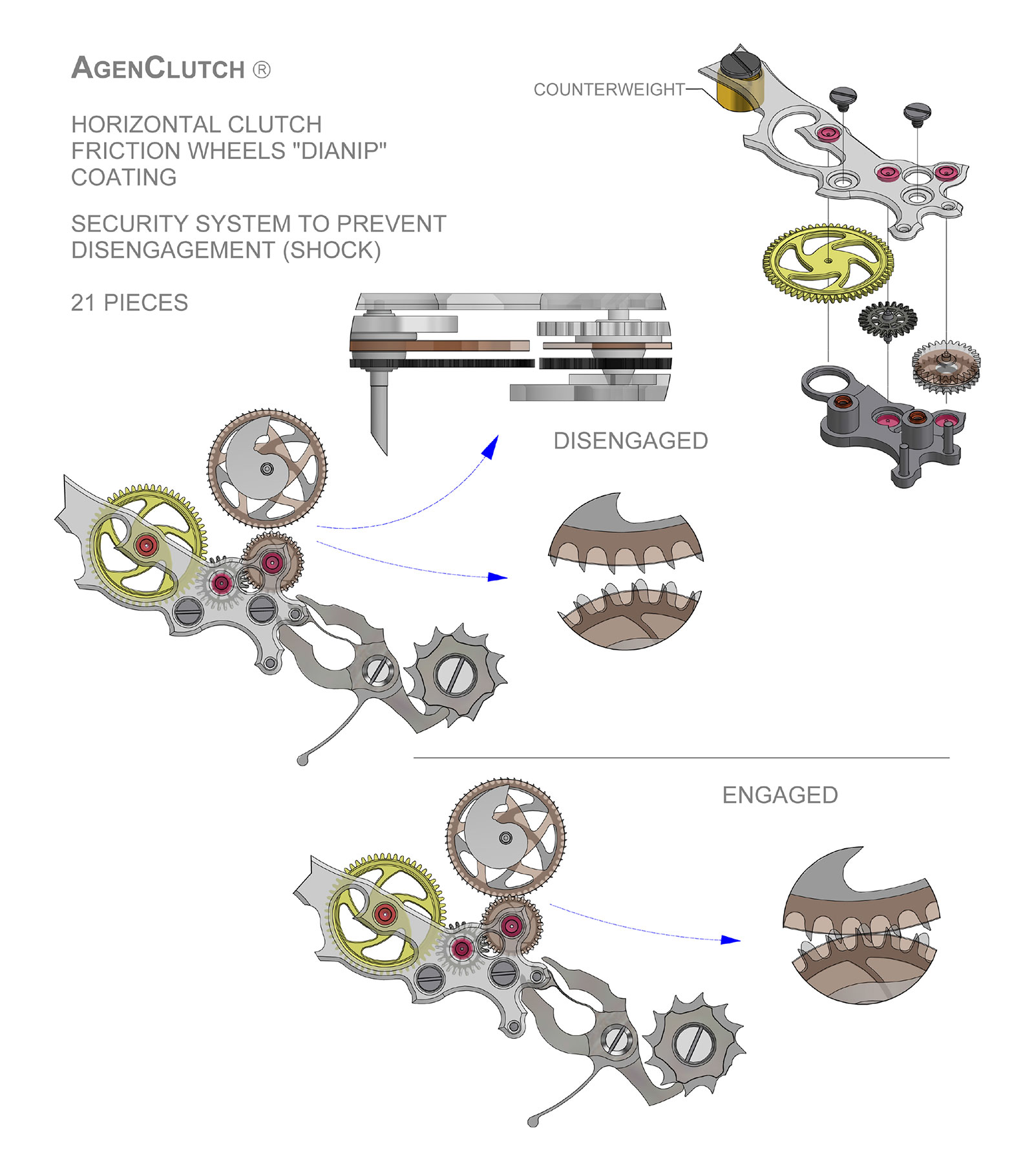
Illustrating the purpose of the smooth clutch wheels. Diagram – Agenhor
Another innovation within the chronograph is the elapsed time recording mechanism – named AgenGraphe Heart – where each element has its own components for jumping and reset. The hour, minute and second counters each have a coiled tension spring for a crisply jumping hand, while the minute and second counters each have a snail cam for the reset function.
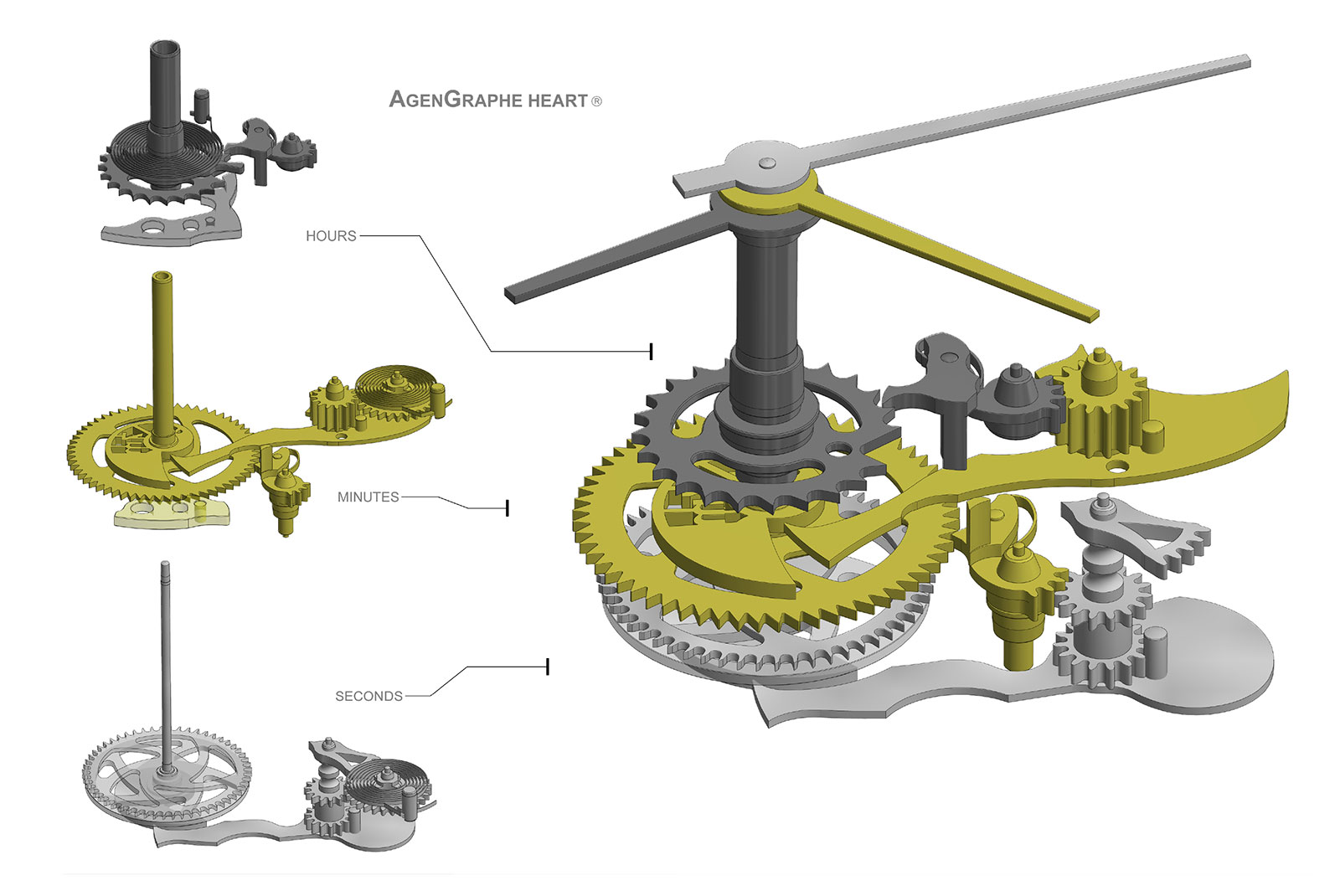
The heart, revealing the tiny tension springs and snail cams for each part of the chronograph. Diagram – Agenhor
Decorated and assembled by Agenhor, and then delivered to Moser as a finished movement, the AgenGraphe is attractive. The construction means it is visually dense, with most of the chronograph levers and springs visible on the back.
And though the watch is automatic, none of the interesting bits are obscured by the rotor, which can sit under the dial thanks to the donut-like construction of the movement.
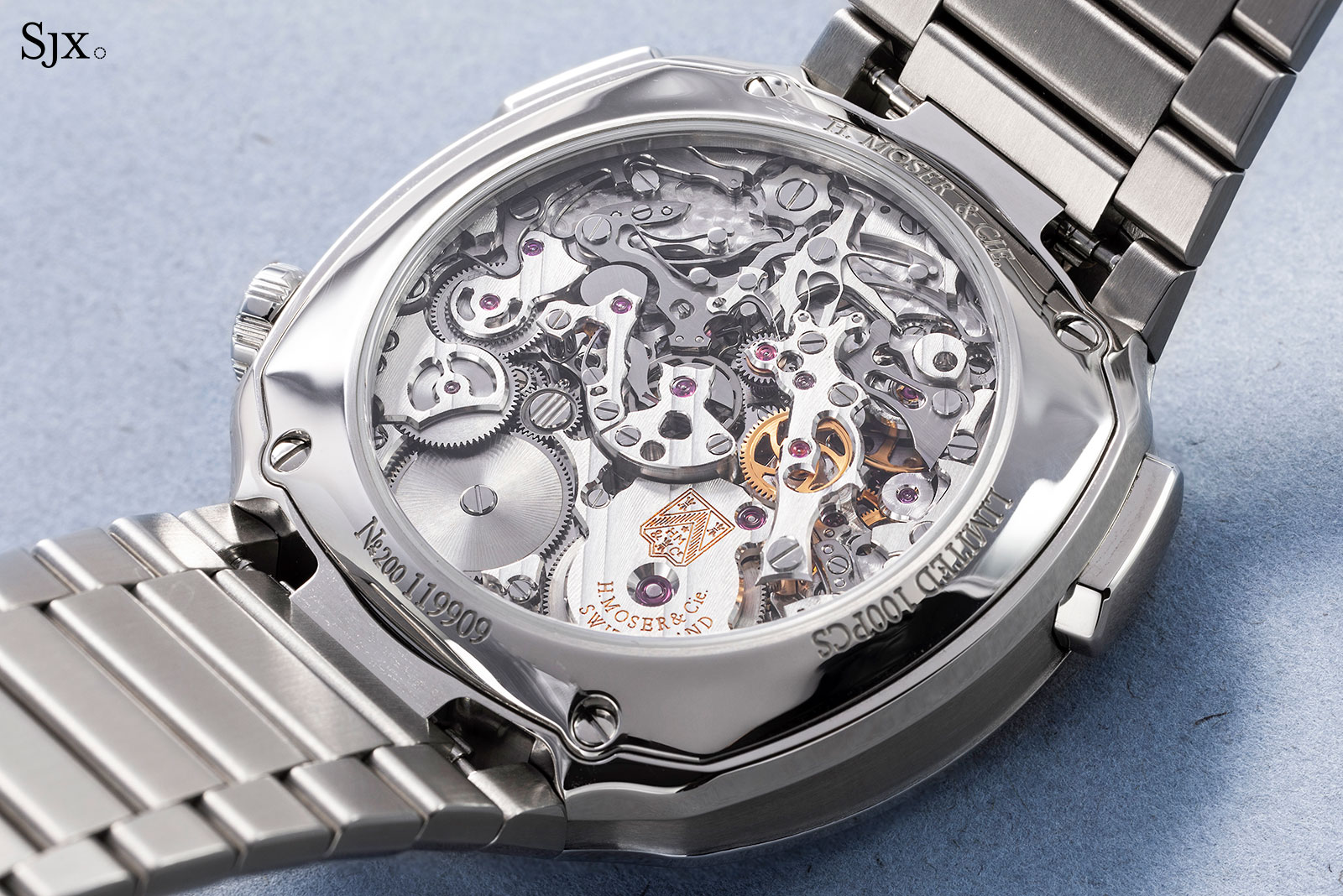
The HMC 902 also looks good up close, with all components decorated carefully and completely. Most of the finishing is done by machine, and some of it is done by hand. The bridges, for instance, have mechanically milled bevelling, while the chronograph levels have hand-finished bevels.
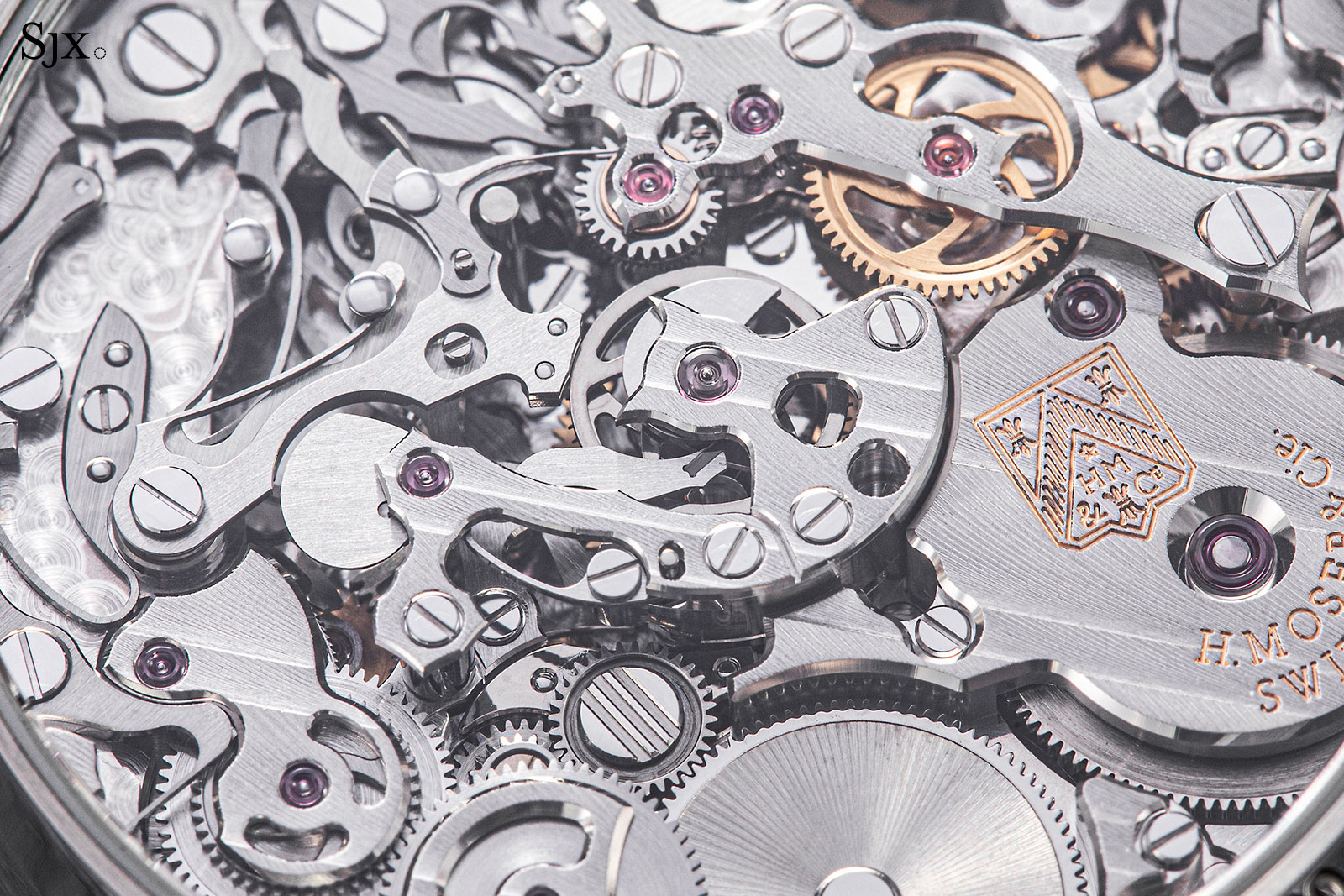
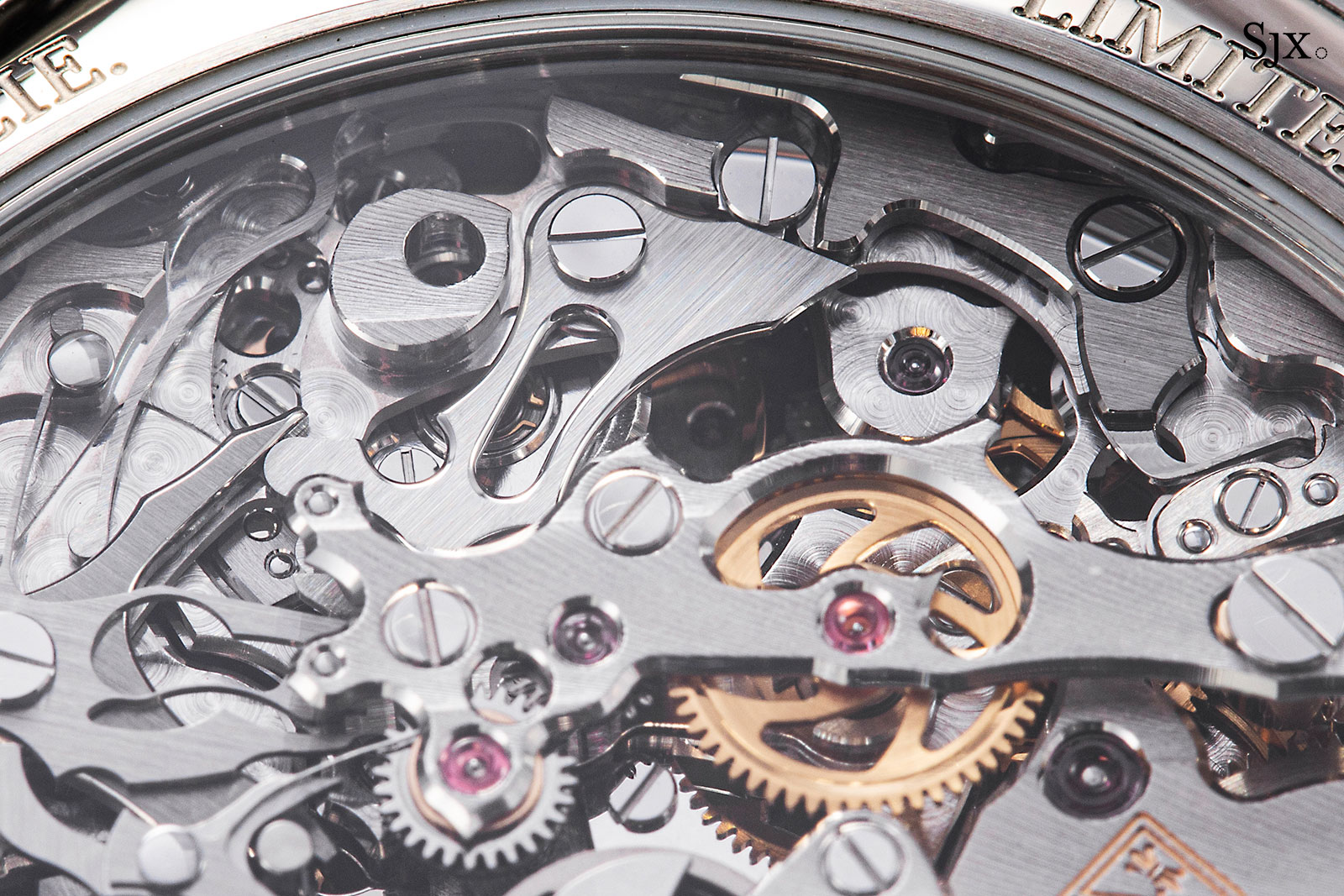
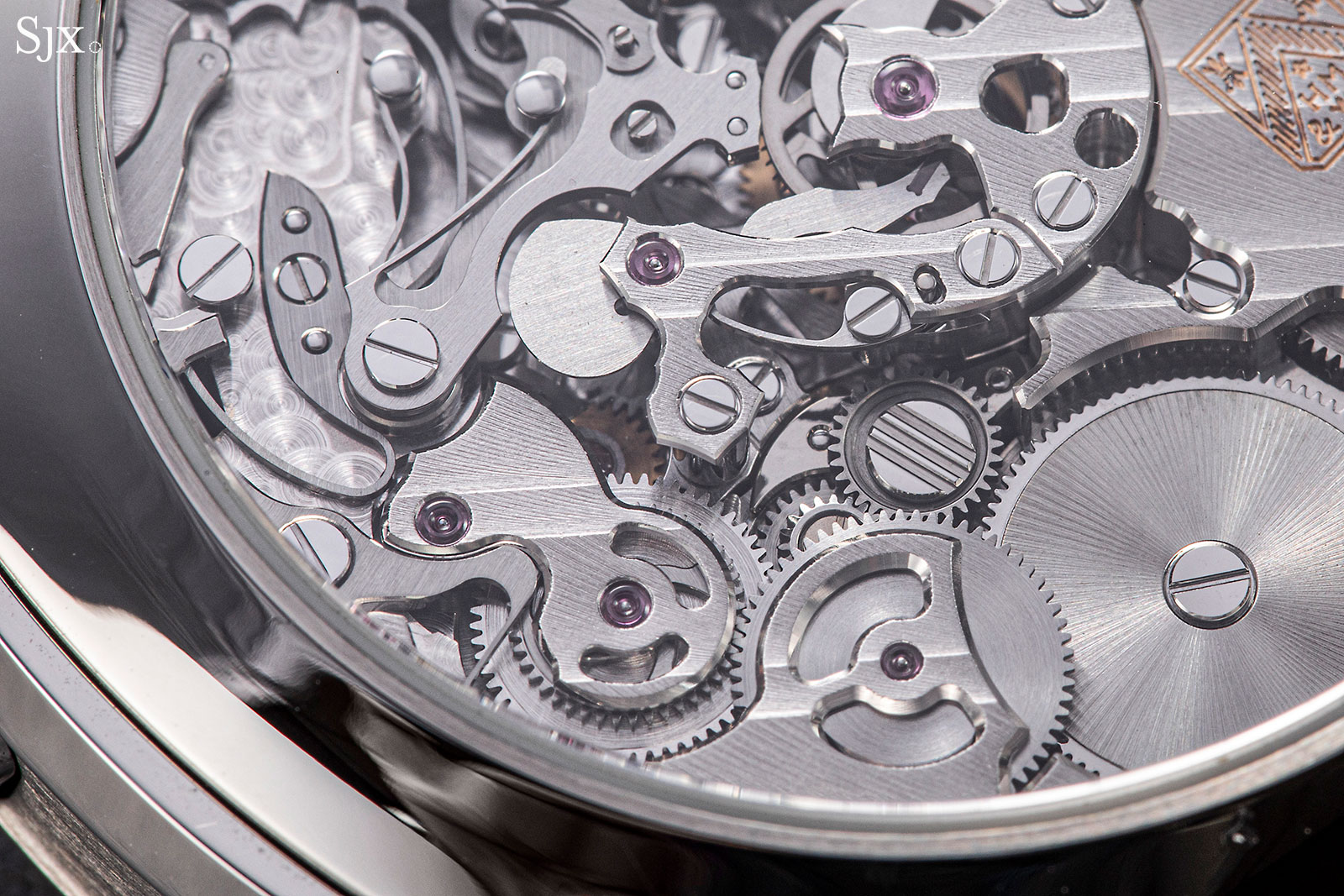
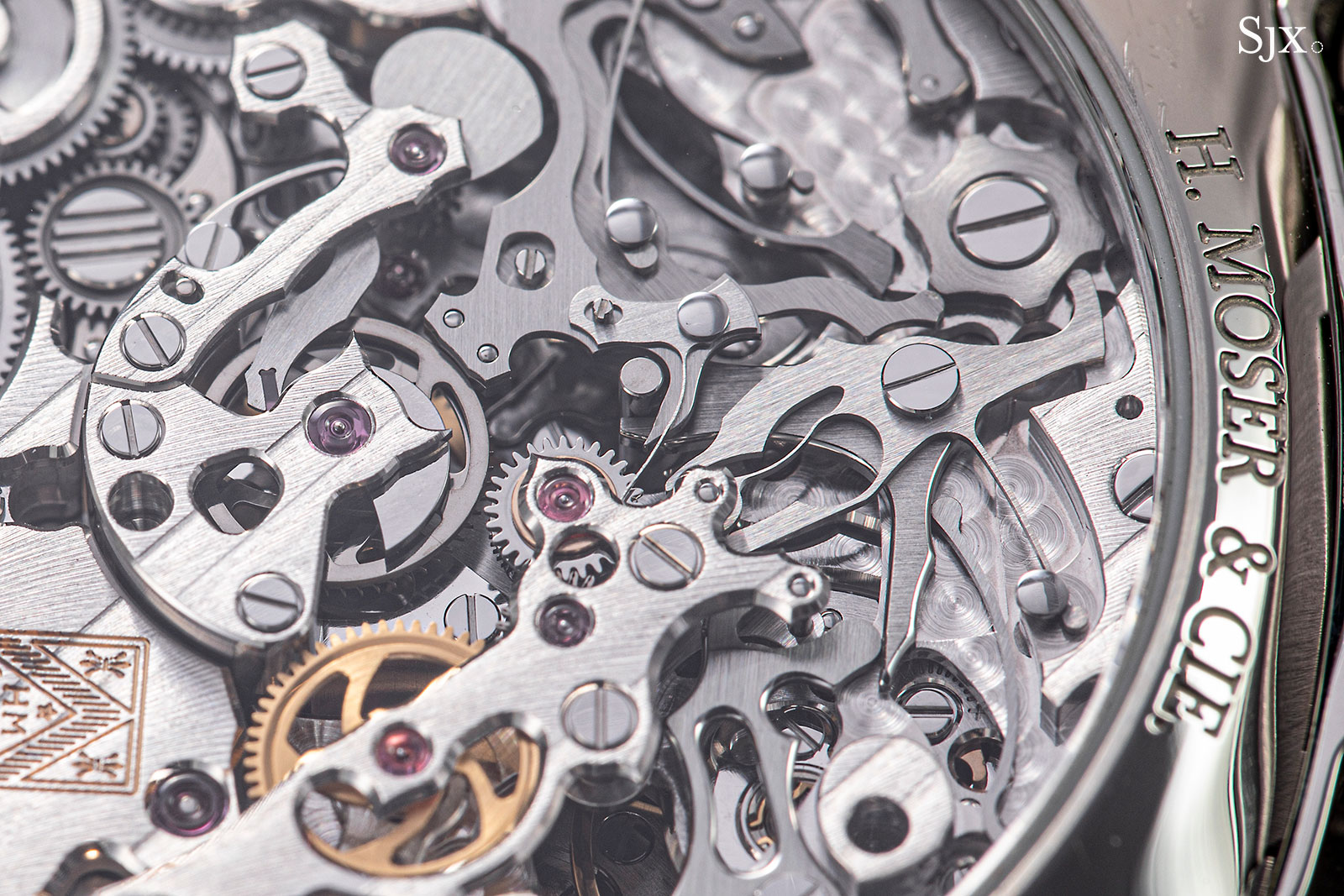
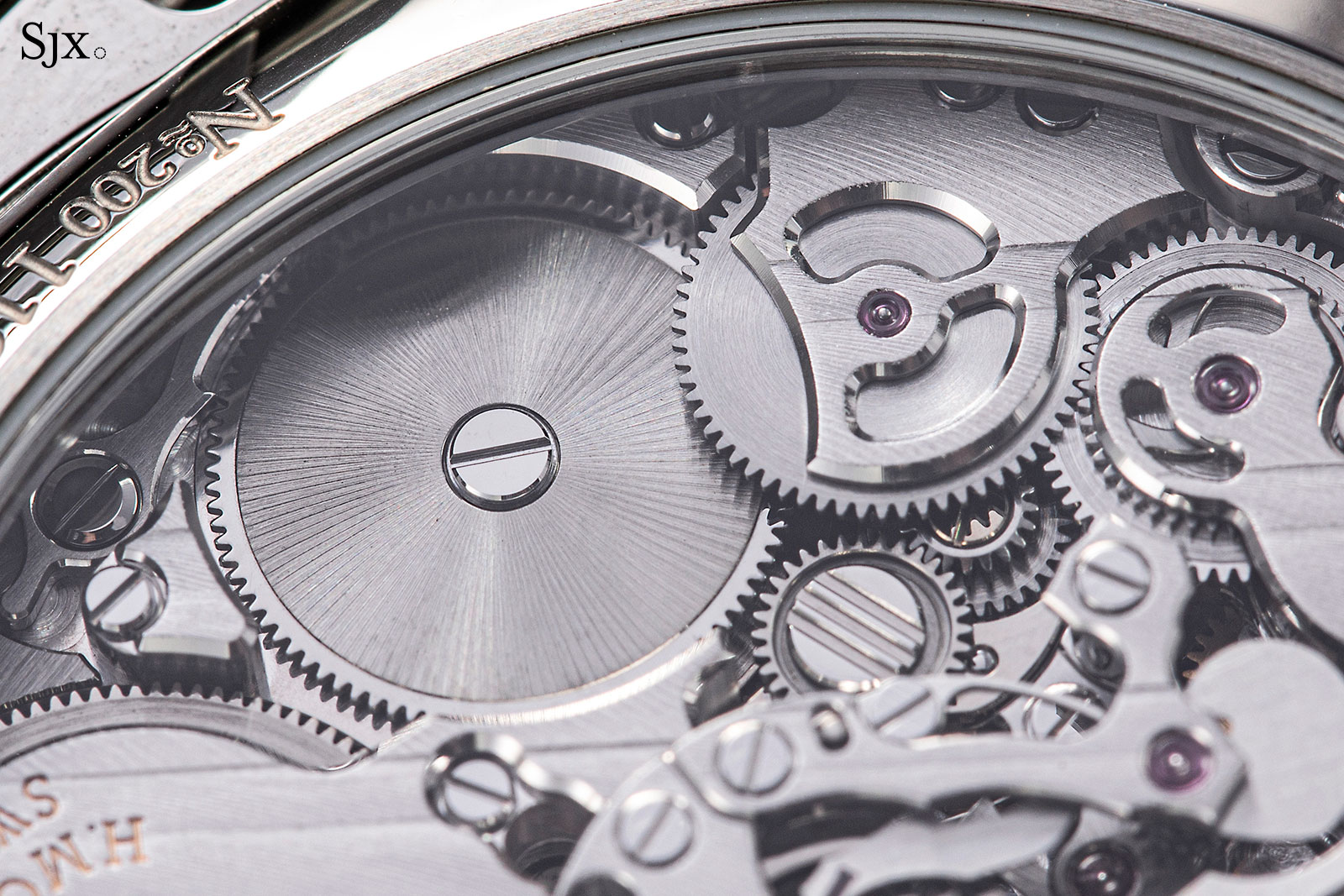
Concluding thoughts
Moser managed to create a successful new product in perhaps the most competitive and difficult segment of watchmaking.
Of all of the recent luxury sports watches, the Streamliner is the most original in terms of design. And Moser also got the execution right, with the correct level of finishing on the case and movement.
Price-wise, the Streamliner isn’t a bargain, neither is it exorbitant. It is reasonable, but still just under US$40,000 at retail, which is substantial money.
The Streamliner collection will be expanded further in the near future, with a time-only base model in the works according to insiders. If done as well as the chronograph, the upcoming models could be bestsellers, since they will be simpler and correspondingly less expensive.
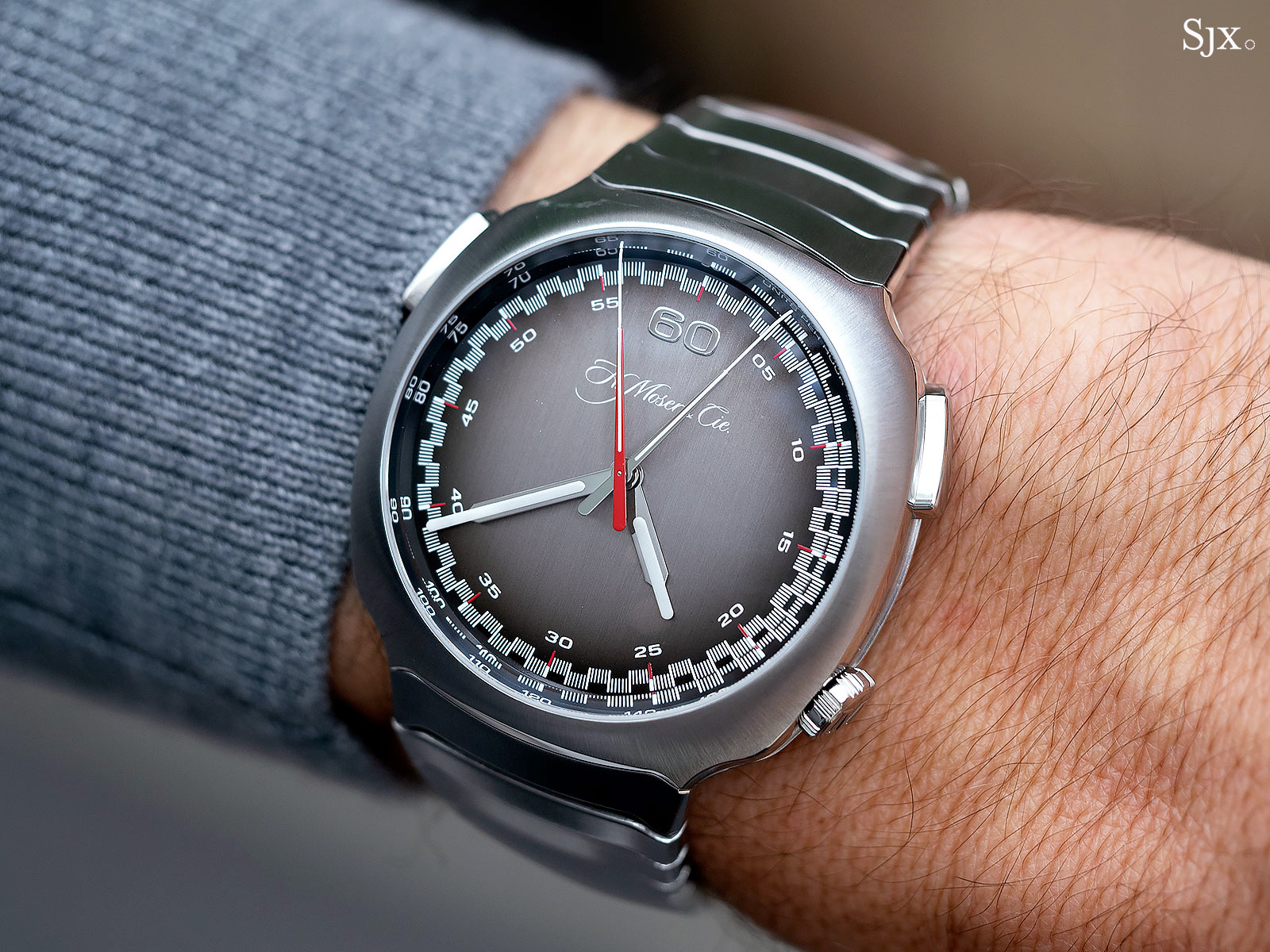
H. Moser & Cie. Streamliner Chronograph
Ref. 6902-1200
Diameter: 42.3mm
Height: 14.2mm
Material: Steel
Water resistance: 120m
Movement: HMC 902 (developed by Agenhor)
Functions: Hours, minutes, and flyback chronograph
Frequency: 21,600 beats per hour (3 Hz)
Winding: Automatic
Power reserve: 54 hours
Strap: Steel bracelet
Limited edition: 100 pieces
Availability: At H. Moser & Cie. retailers from January 2020 onwards
Price: US$39,900, or 60,700 Singapore dollars
For more information, visit H-moser.com.
Correction January 9, 2019: The tips of the hands are ceramic, and not polymer as stated in an earlier version of the article.
Back to top.
